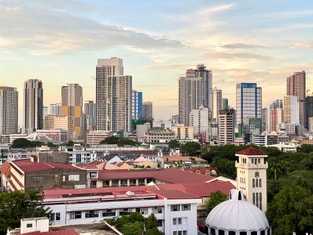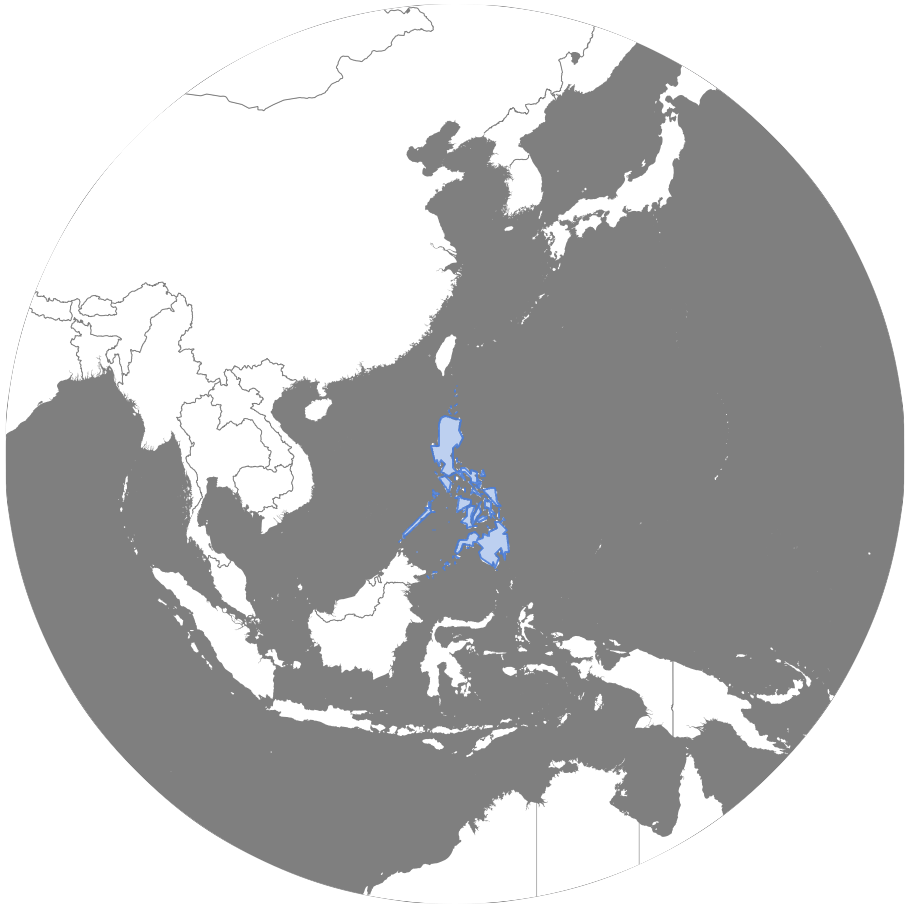
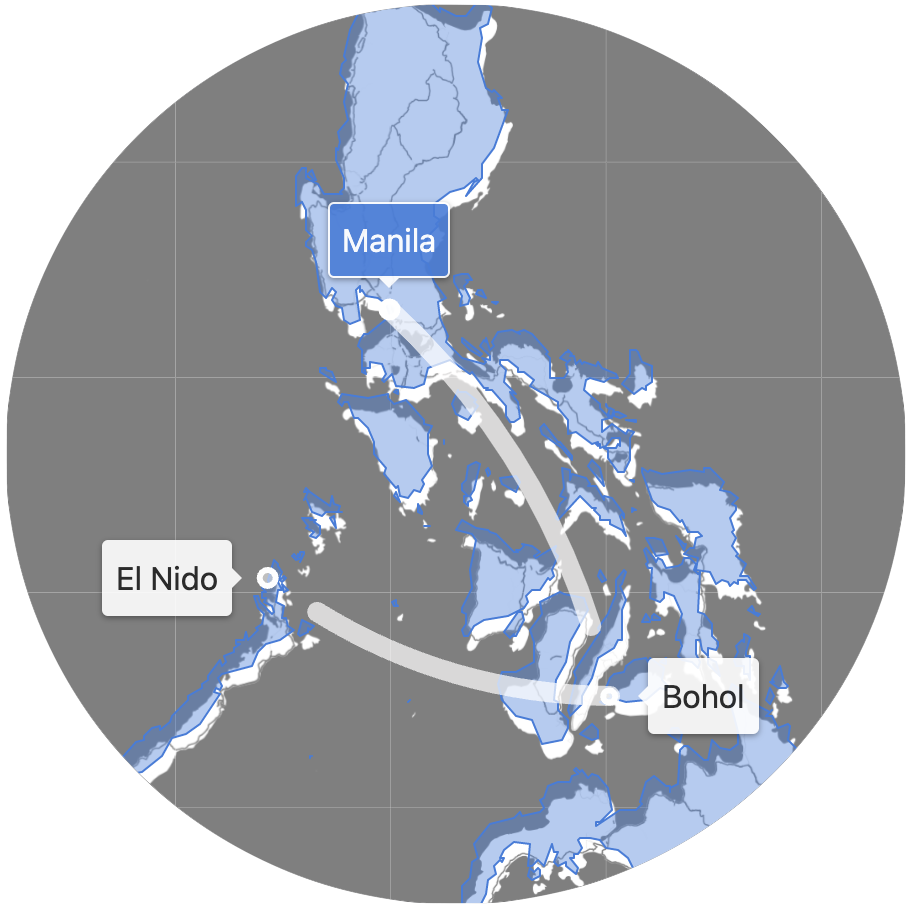
The Philippines
Manila
Guns and Cash: Arrival
We exit the airport and are immediately confronted by a man holding a shotgun.01
The man appears to be on our side. He asks us where we’re going. We tell him. The answer doesn’t seem to really matter. He walks us over to a woman and tells us to go with her. She seems kind of official—she has some laminated paper and a clipboard.
What’s happening isn’t clear. We actually need to find an ATM to get cash, but when a guy with a shotgun asks you something and tells you to do something, you do it.
We manage to extract ourselves from the woman—who, we would later figure out, wasn’t official at all, just someone working for a private transport company that groups people and loads them into vans—and start asking people02 where to find an ATM. They say that we need to go inside the domestic terminal. We find our way up to the level above, going by hoards of people waiting outside the airport03 and other heavily armed guards, and don’t see anything. We ask a cleaning lady, who tell us we need to go inside. We see only a tiny doorway with a metal detector and X-ray machine. Do we need to go through this to get the ATM? The answer turns out to be yes. So we do.
The whole thing at this point is already strange. Isn’t getting cash when you arrive at the international airport of the capital and biggest city of a place kind of common?04
So anyway, now we have cash, and we head to the vehicle transport area.05 We were instructed to take a Grab (the local Uber) to our apartment. Sounds great—used Grab a ton in Vietnam, no problem.
We were instructed to try GrabCab. We open the app, and Grab has nothing called GrabCab, instead it has Grab Car and Grab Taxi.
We try both. Over and over and over. Nothing. Nobody is available, despite considerable demand. At one point, after ten or twenty minutes, we finally get a hit. But after waiting for him to arrive, he calls us. Julie tries talking to him, but they can’t understand each other. He hangs up. We start writing messages describing where we are and asking where we ought to go.06 Finally, he just marks that he picked us up, and then immediately marks the ride as completed. We kept trying, but never got another match.
At this point, looking around, we had two choices: metered and coupon (?) taxis. We weren’t thrilled about this—stories abound of taxi ripoffs at best, or muggings at worst07—but there was no other option.08 The Metered taxi has an absolutely enormous queue (dozens of people, literally) and is not moving and no taxis are arriving.
We went instead to the coupon taxi queue, which only had one or two people in it. But once we got to the front, it turned out that this queue was just to fill out some paper, which then dumps you in an even more enormous and unmoving queue to actually wait for these coupon taxis to arrive.
With resignation, we joined what we had spent the whole time hoping we wouldn’t have to join: the metered line.
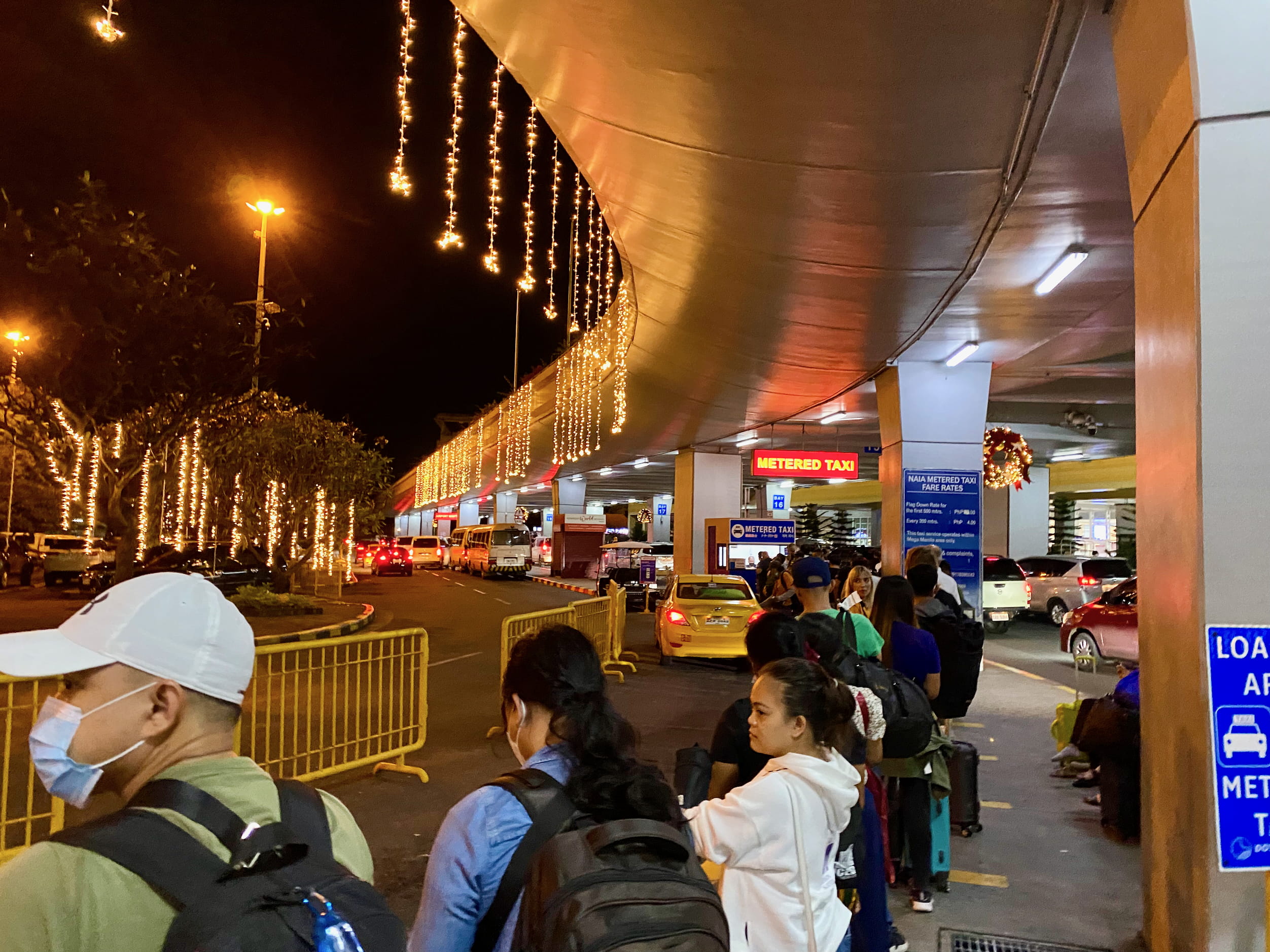
As we wait, I have a bit of time to look around. There is a police help desk nearby you would hope you could use to ask who to trust, given trust is apparently a problem because all the cops have shotguns. There is no one at the desk.
Our flight had landed at 7:30pm. We get a cab at 11:30pm.
Just after we leave sight of the airport on the highway, the driver pulls off to the side of the road, stops the car, gets out, and starts walking back to the backseat doors. Cue adrenaline rush. He just shuts the trunk.
We drive into town. There is serious traffic to wade through at nearly midnight. They weren’t kidding about the Manila gridlock.
As we arrive in our district, a bunch of streets are sealed off with gates.09 As we enter the area, a whole bunch of everything seems to be happening at once: folks shopping, girls out clubbing, music blasting, guys dancing outside an ATM, and people sprawled out on cardboard amongst it all.
When we get to our complex, the building entrance has an iron gate with a padlock on it. We get the attention of the guard on duty who lets us in. It turns out that this iron gate isn’t just a nighttime thing, but it’s locked at all times. You need the guard’s help if you want to enter, or if you want to leave.
We tell her the apartment we’re to be staying at, which she didn’t know anything about, but after writing our names down on a piece of paper she was fine giving us a key to the room.
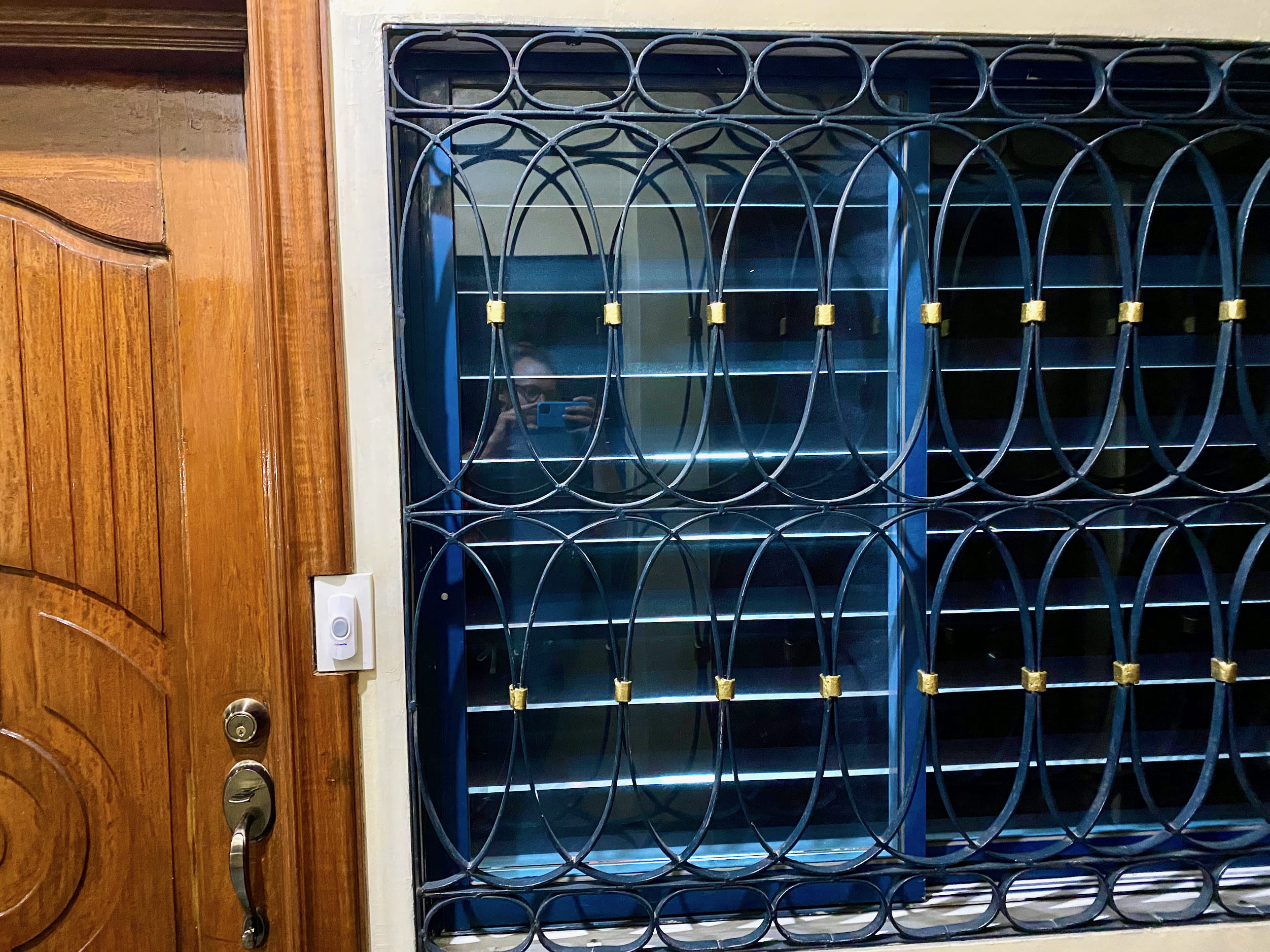
Even in the iron gate’d building complex, our individual unit also has iron bars on the windows facing the hallway.
We get into the apartment, and there’s one last task for the day. In the shower is the largest cockroach we’d seen yet. (Aren’t they supposed to run away? They never seem to.) It’s Julie’s turn to kill it. Here’s a photo of her armored up in oven gloves and armed with my shoe, working up the nerves to crunch its little body into the afterlife.
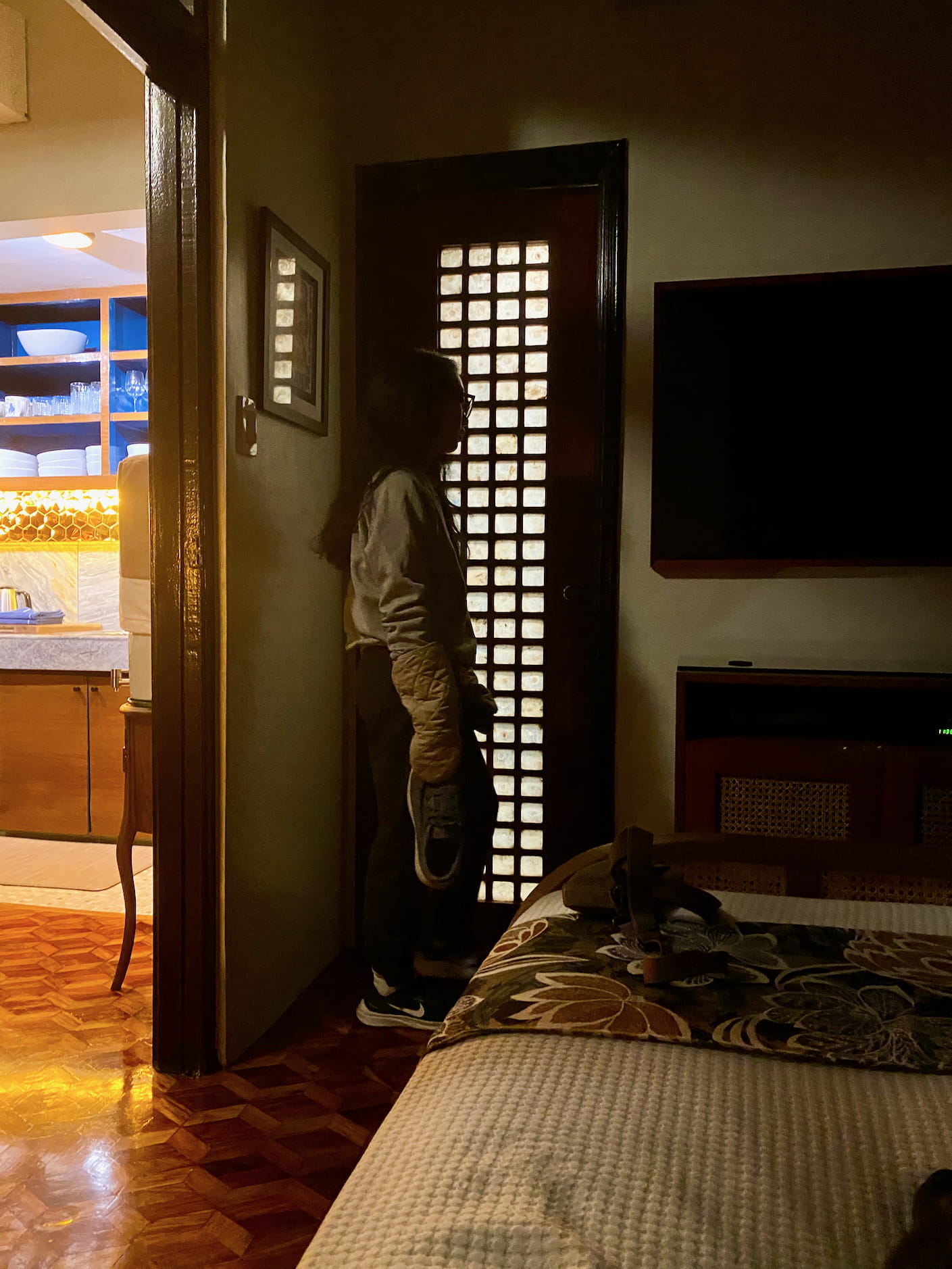
It took maybe fifteen minutes for her to summon the courage. I want to say it was a growing experience, though I feel a bit bad. But I don’t want to kill all of them myself. Gross!
I would say, all in all, the arrival was a bit rough.
The Manila Megacity
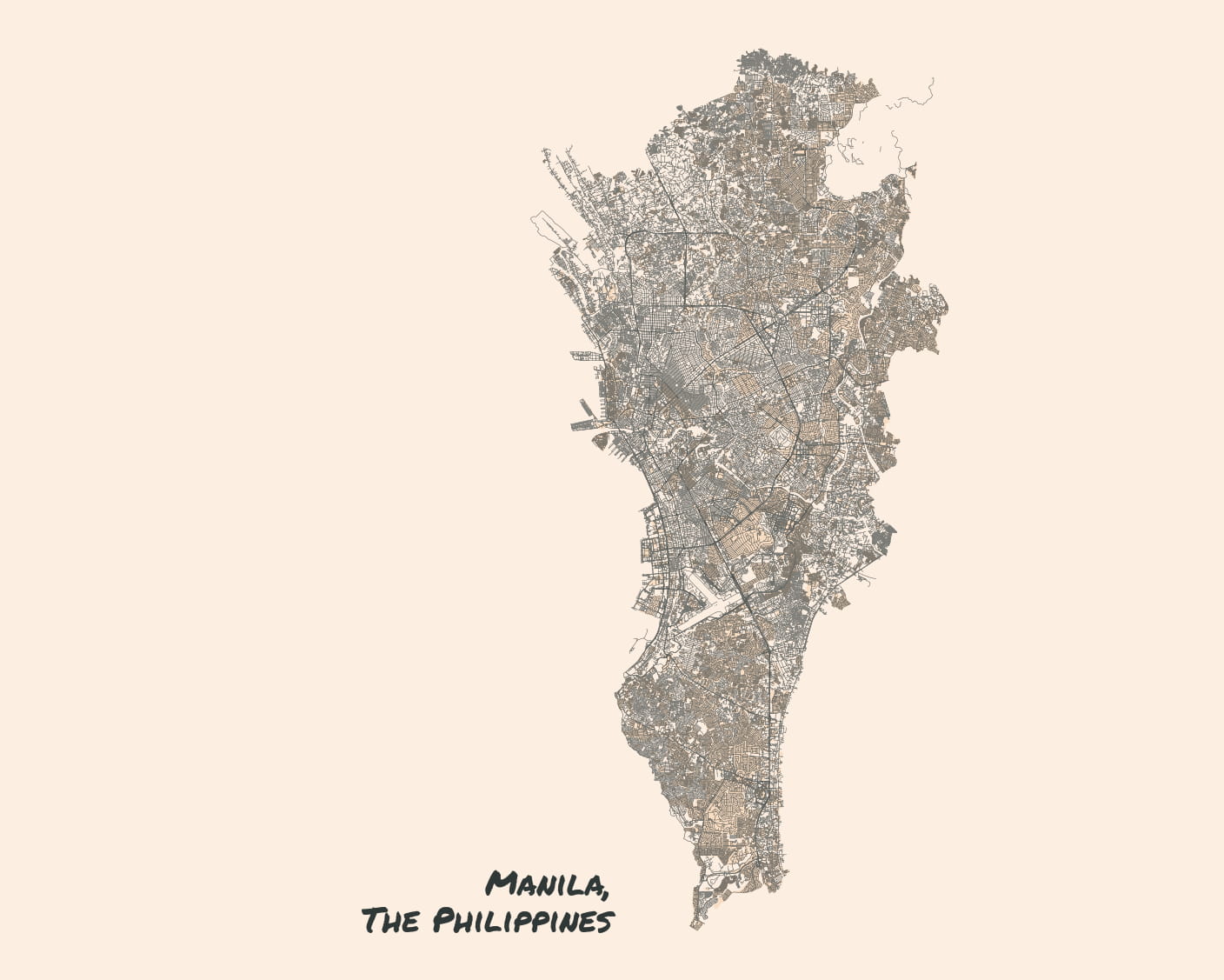
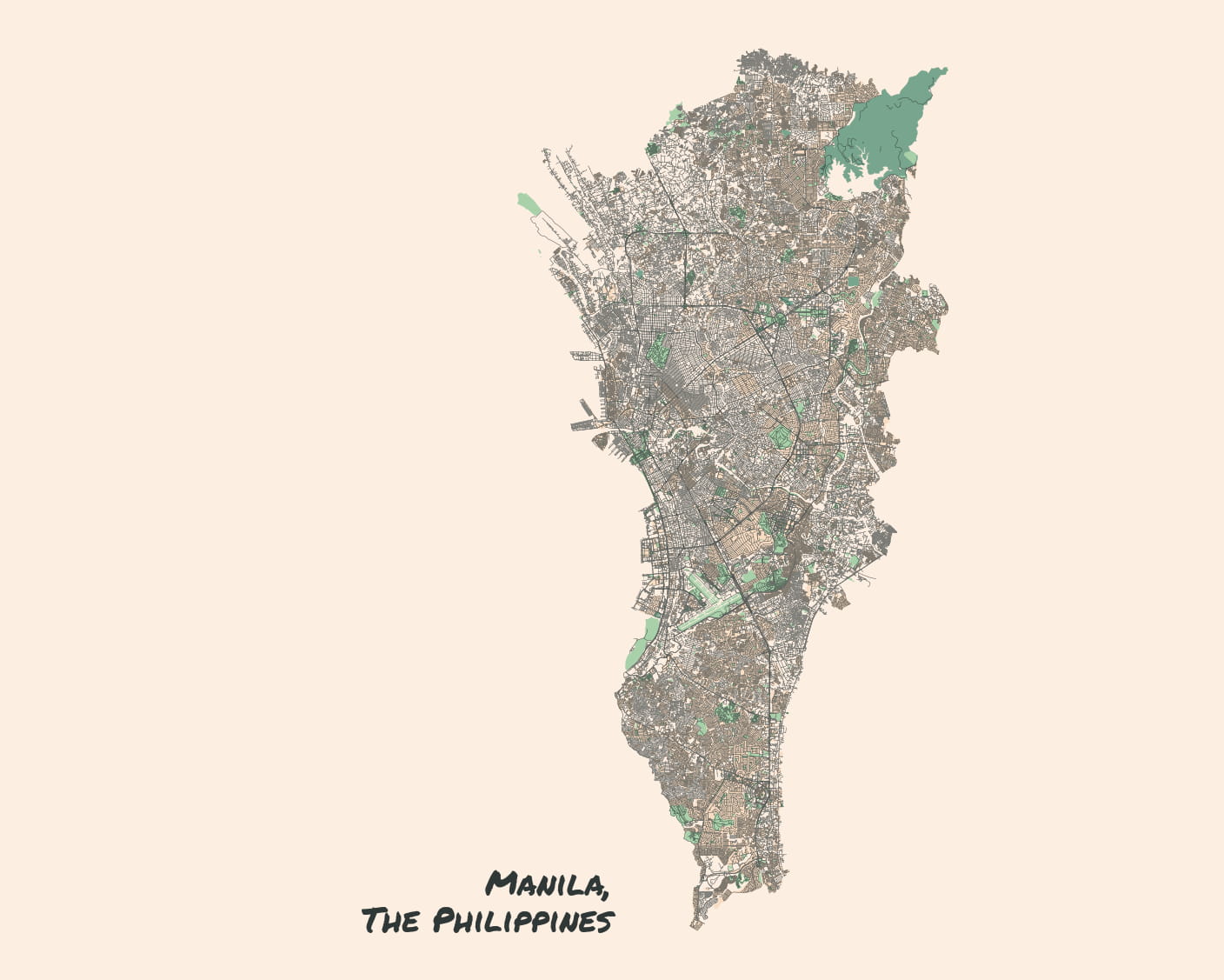
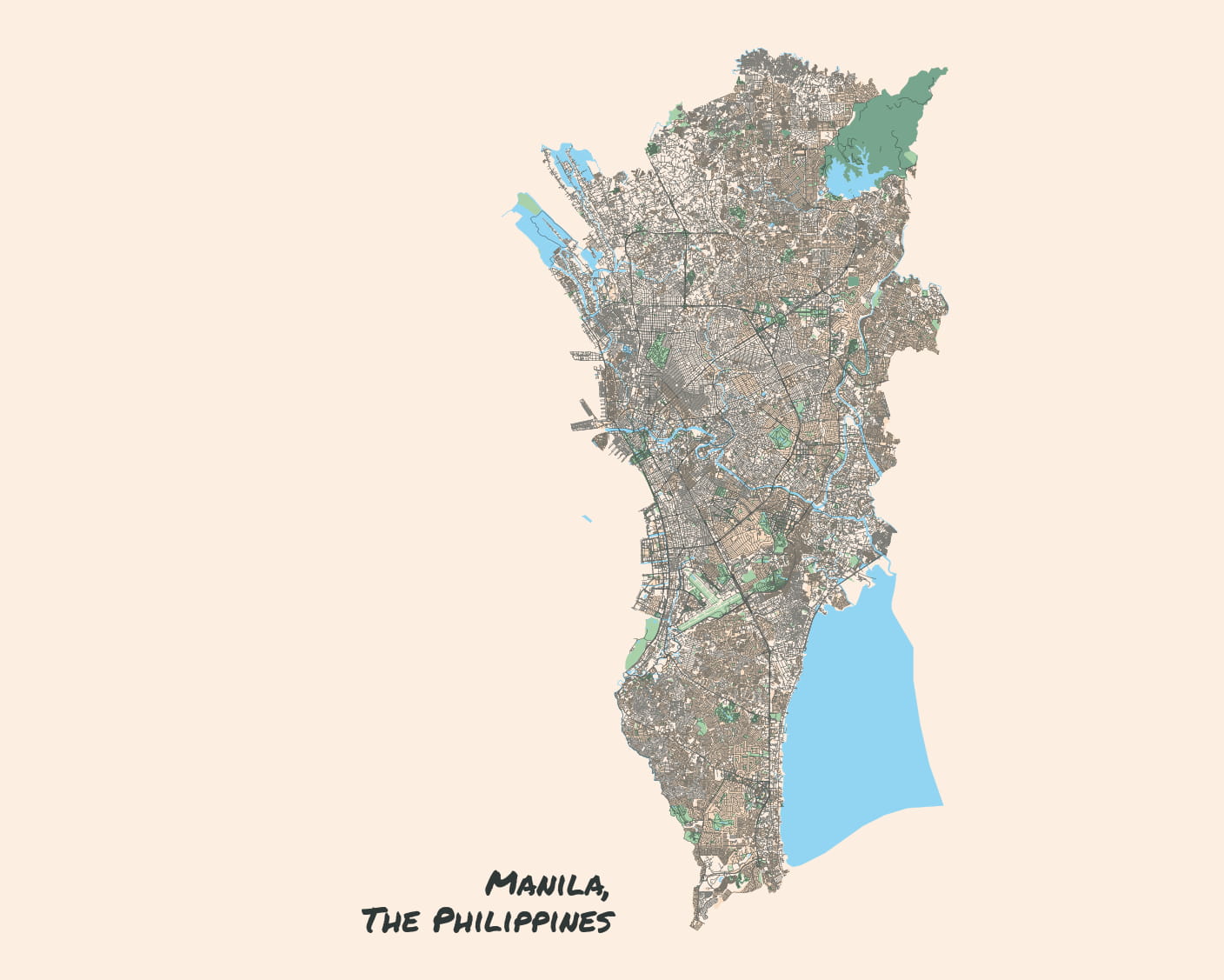
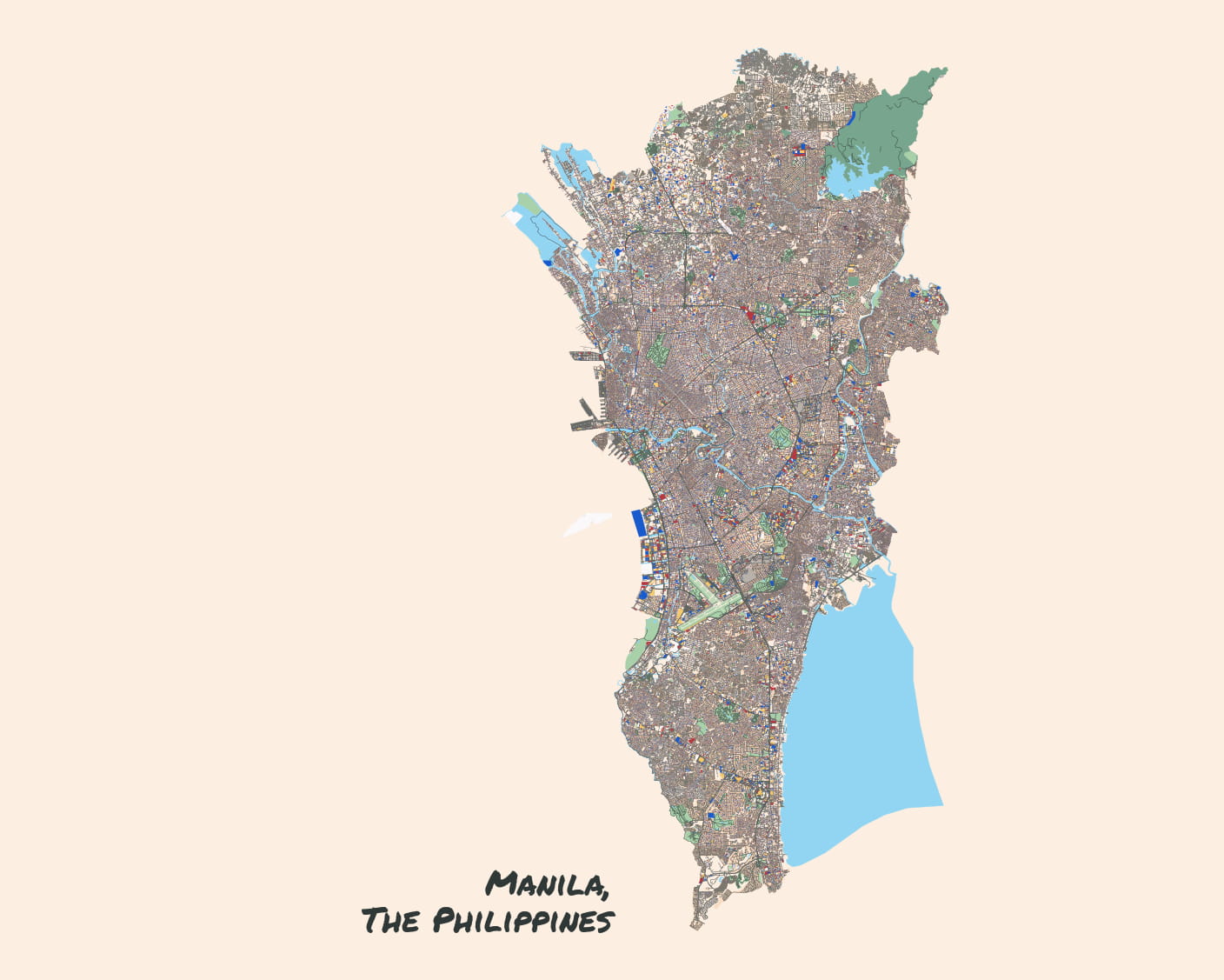
Metro Manila has roughly 14M people and is made up of sixteen cities, including the City of Manila (the true capital) and Quezon City (where we stayed). Some of the cities still, today, have border disputes for who owns which turf.10 It is notorious for being unsafe.
The city conglomerate is enormous. Its zones range from ultra developed to 50% jungle to scrap-built shacks. On a twenty-five minute drive,11 we’d easily see all three.
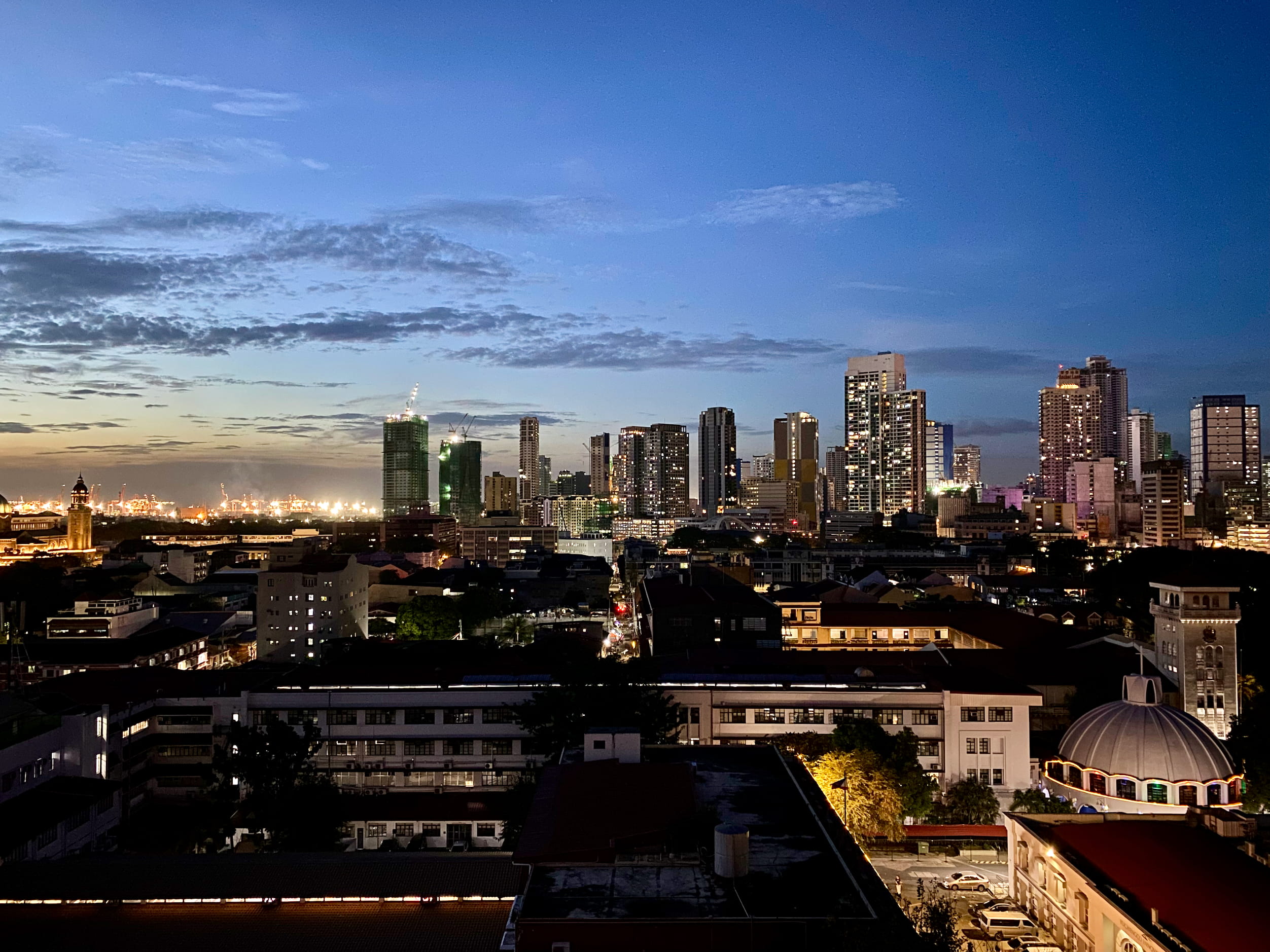
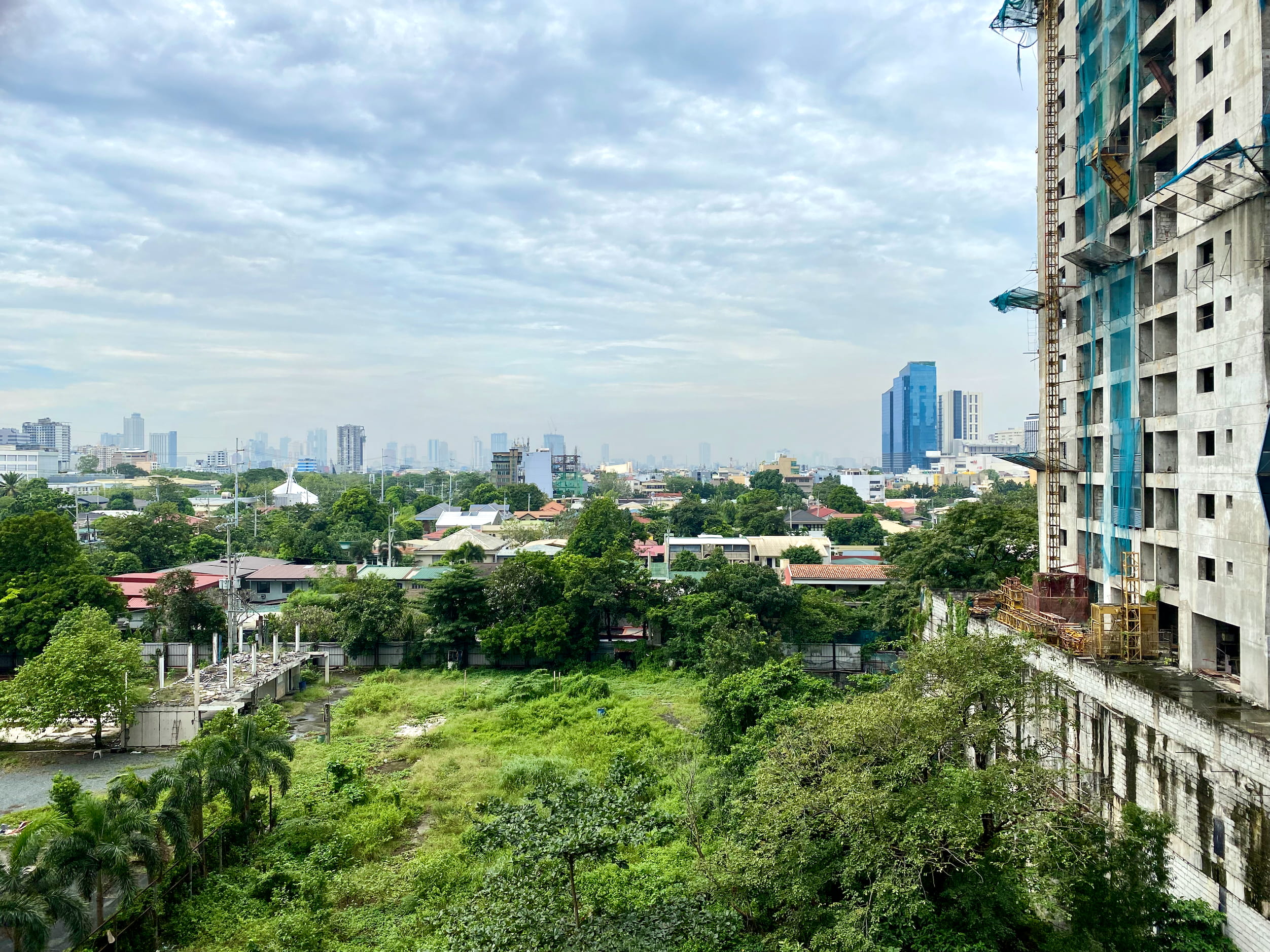
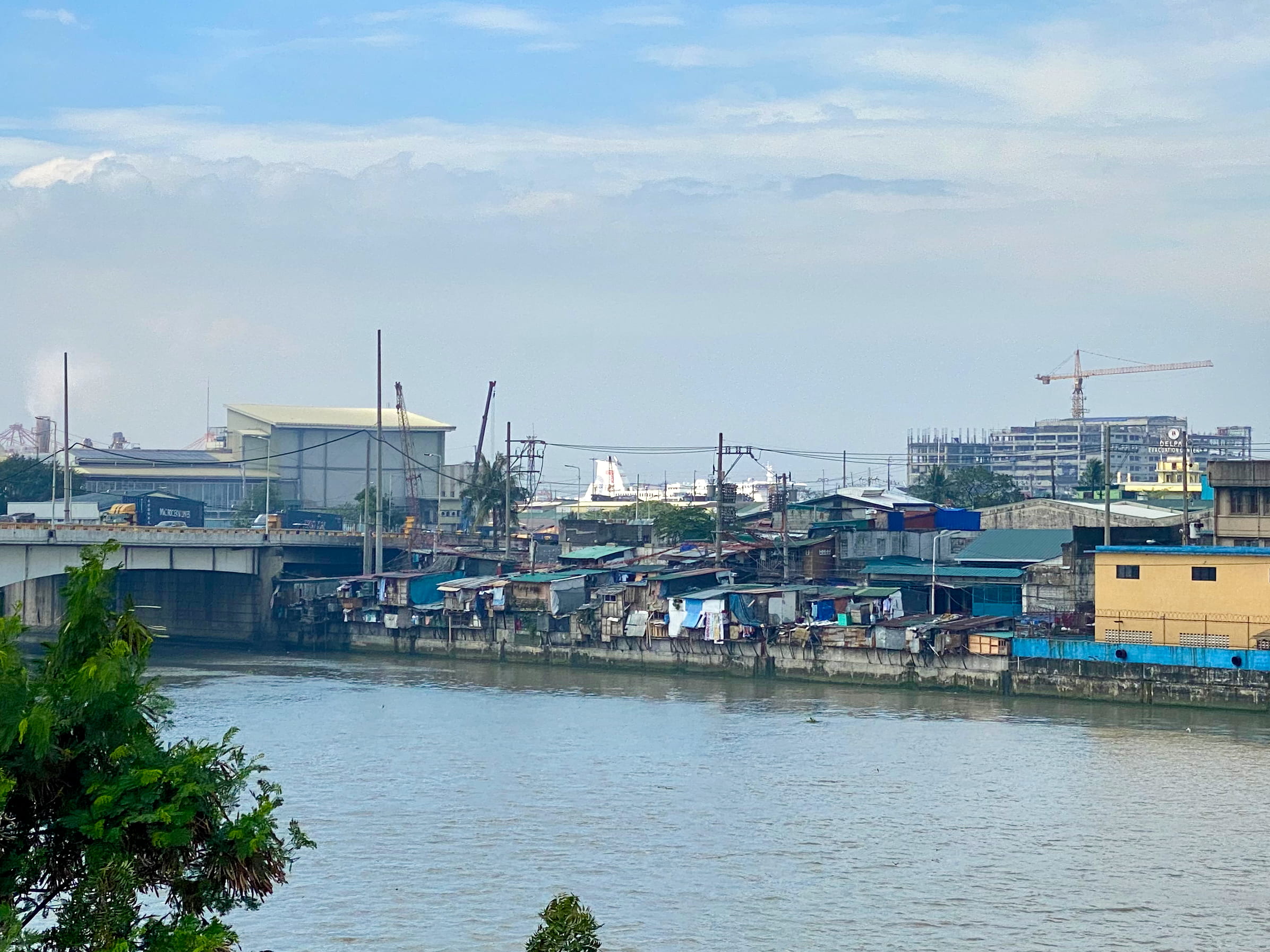
One unifying factor is the roads: the traffic is wholly ungodly, and the busses are unique.12 Our first night in wasn’t a fluke—getting a Grab anywhere is hard.
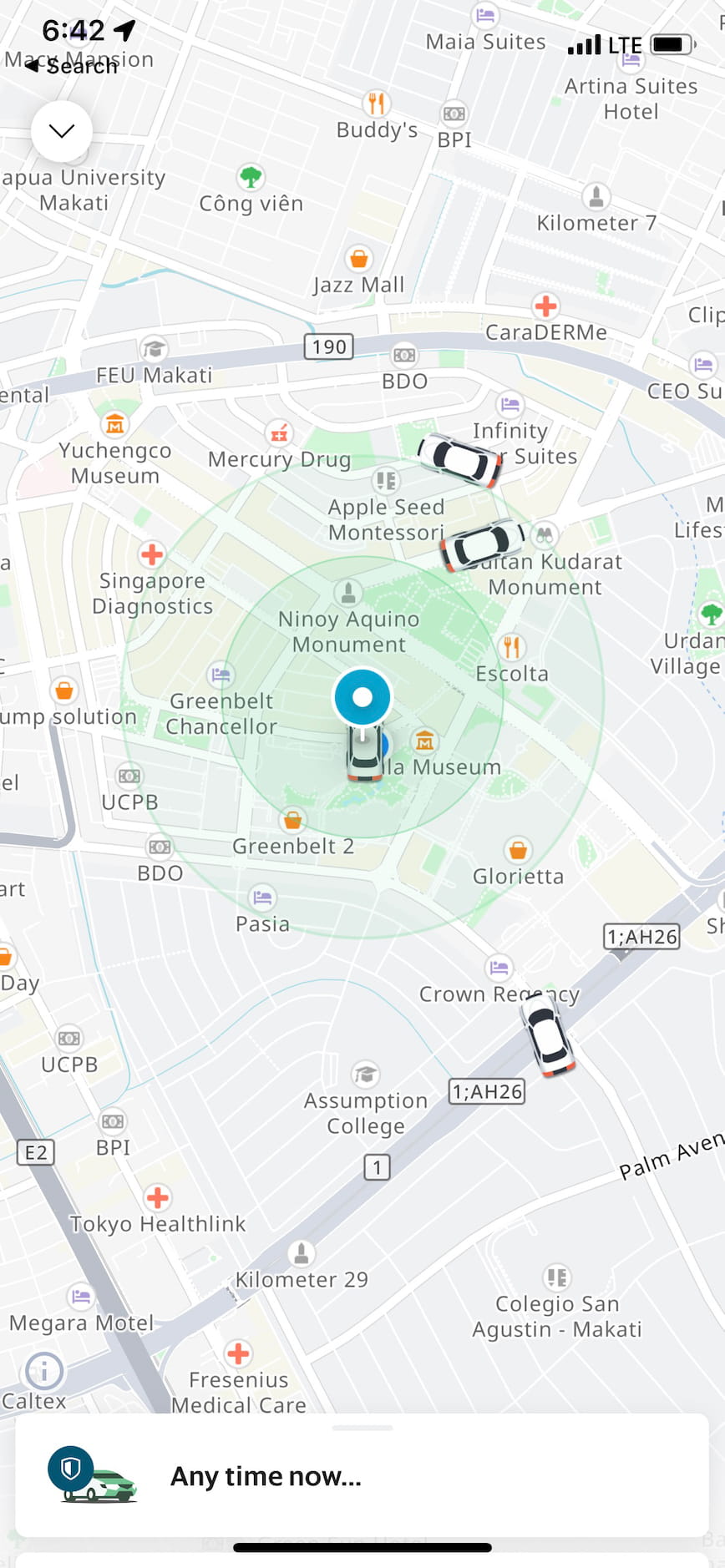
Yeah Grab, I feel the same way. Any time now…
Is It Safe?
Our usual agenda being roughly walk around a bunch, a central question I wanted to figure out was: is it actually unsafe here?
This actually turns out to be a hard question to answer. To this point I don’t really know.
I can tell you that I didn’t feel safe. We stayed in what was supposed to be the nicest, safest area of the city. Walking around, every commercial building had a guard with a shotgun at the entrance. We’d see somewhere between one and four shotgun-wielding guards per block. I feel like I live in a different world from people who feel safe when more guns are around. Because when a lot of guys are standing around with large guns, the only logical conclusion seems to be that they need big guns to protect from threats with smaller guns, which implies that people with guns who pose threats are everywhere.13
Also, the streets were always a bit too empty. It felt like we were the only ones walking places. People seem to love tinted windows, so tinted windowed vans would ominously slow roll by not infrequently.
When we left the central area to check out some Officially Mandated Tourist Activities (OMTAs), I always felt that we stuck out. People wanted to sell stuff to us constantly, so taxis and vendors would be waving and shouting at and following us as we walked around. The general feeling of being targeted, plus the discomfort from having guns everywhere, combined with the heat and bugs and often lack of sidewalks, made being out kind of generally unpleasant.14
So that’s all how it felt. But was it actually unsafe?
Malls and OMTAs
Let’s entertain a brief intermission. We’ll get back to safety in the next section.
We met a Canadian at a climbing gym who’d been living in Manilla for the last few years. He had apparently lived all over Asia for the last two decades. He was pretty down on the city,15 said there was nothing to do if you didn’t like going to malls. Nothing, that is, except scuba diving (which we don’t do, at least yet).
Manilla does have a serious mall game. “Malls, Guns, and Traffic” could maybe be a decent tagline—hey, just like the USA. Wander to one mall, and it’s actually a four-part mall complex. Don’t like any of those malls? Well, good news, it’s directly connected to multiple other malls / mall complexes. Inside, unfortunately: all chains, and a surprising amount of American goods.
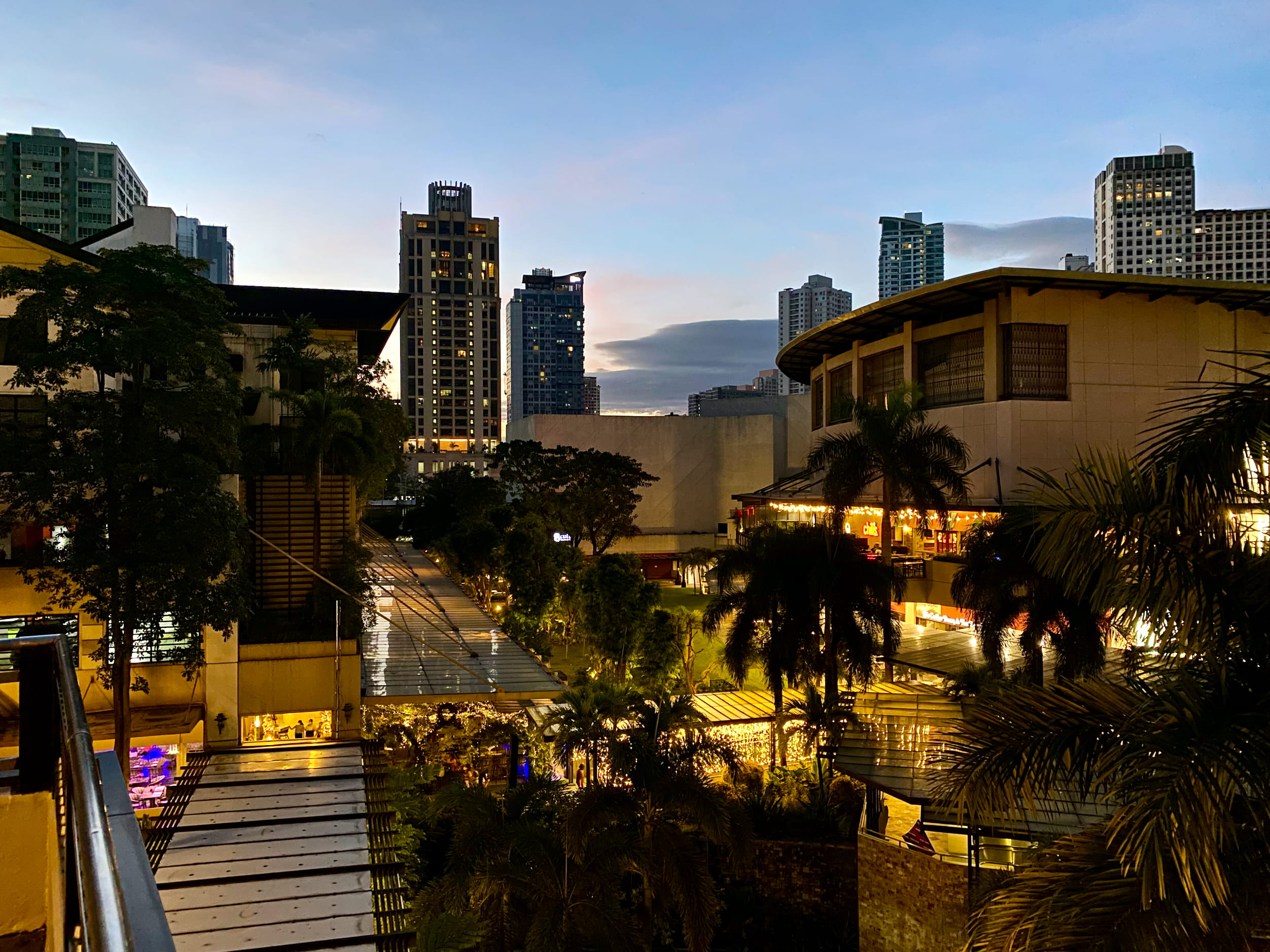
This mall complex had a whole tropical courtyard walkway thing in between the individual malls, in addition to an elevated walkway.
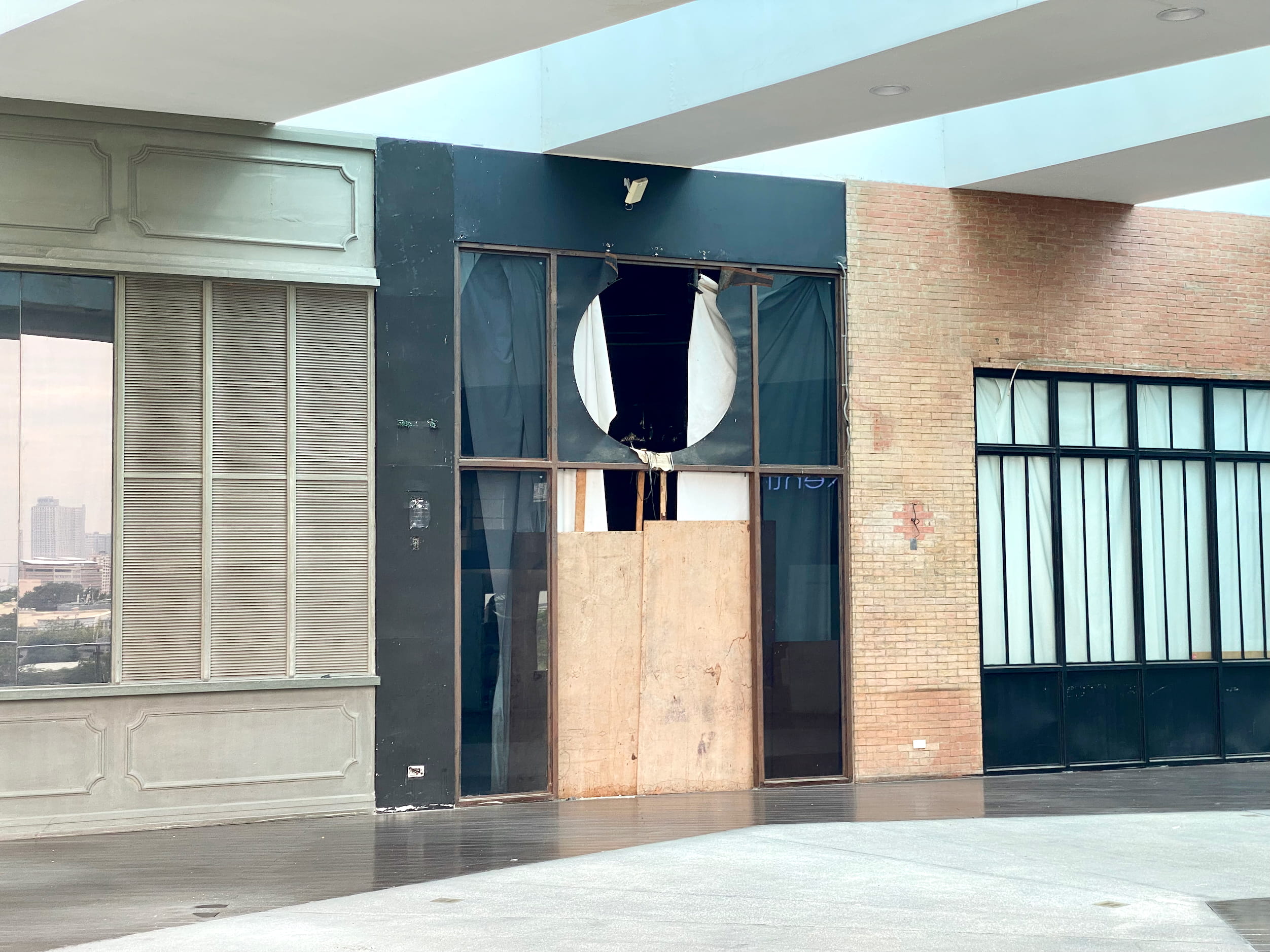
The mall closest to us, which we went to to buy groceries, had that funny thing where everything seems sleek until you go to the floor that nobody’s on, and there’s broken glass and boarded up stuff. Hey, no judgement, that’s a good percentage of the USA West Coast right now.

They were so close to snagging me and then they went and actually put the word Hipster in it and I couldn’t go on or else I’d be a walking meme.
Connecting mall districts were these hyper-landscaped park-ish spots that seemed to have more (armed) guards patrolling it than civilians using it. We seemed to be the only ones walking around, so maybe parking was bad and nobody could get to it.
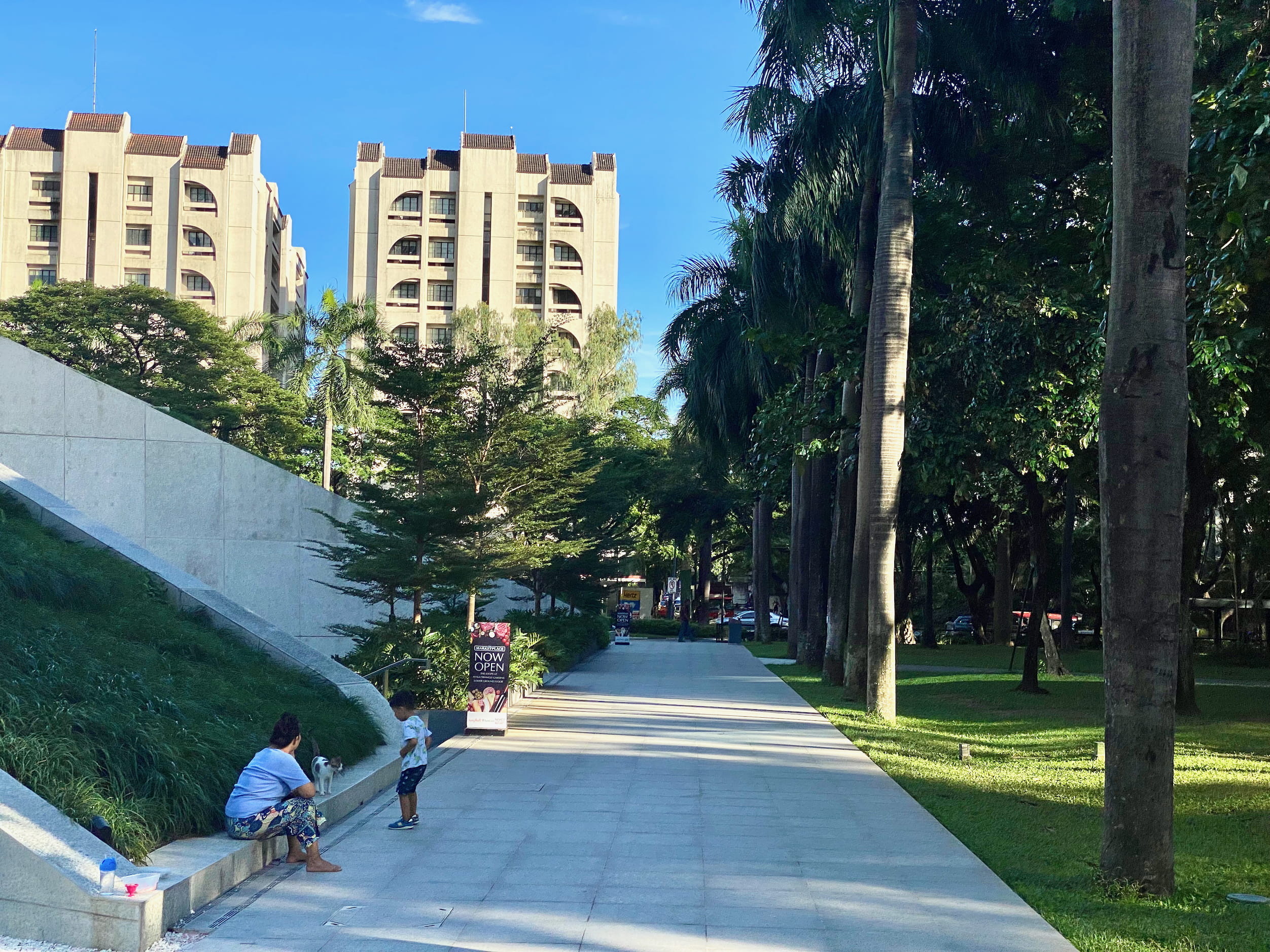
In case you’re wondering why I don’t have any pictures of these shotgun guys it’s because I was afraid to point anything, even my phone, at them. Probably irrational, I know.
Re: OMTAs, we paid our tourist tax and saw the crumbling walls of a former fort, a few Catholic churches,16 an extremely dirty lego model of one of those Catholic churches, statue of martyr being firing squad’d, and a big Christmas tree not even trying to look real.
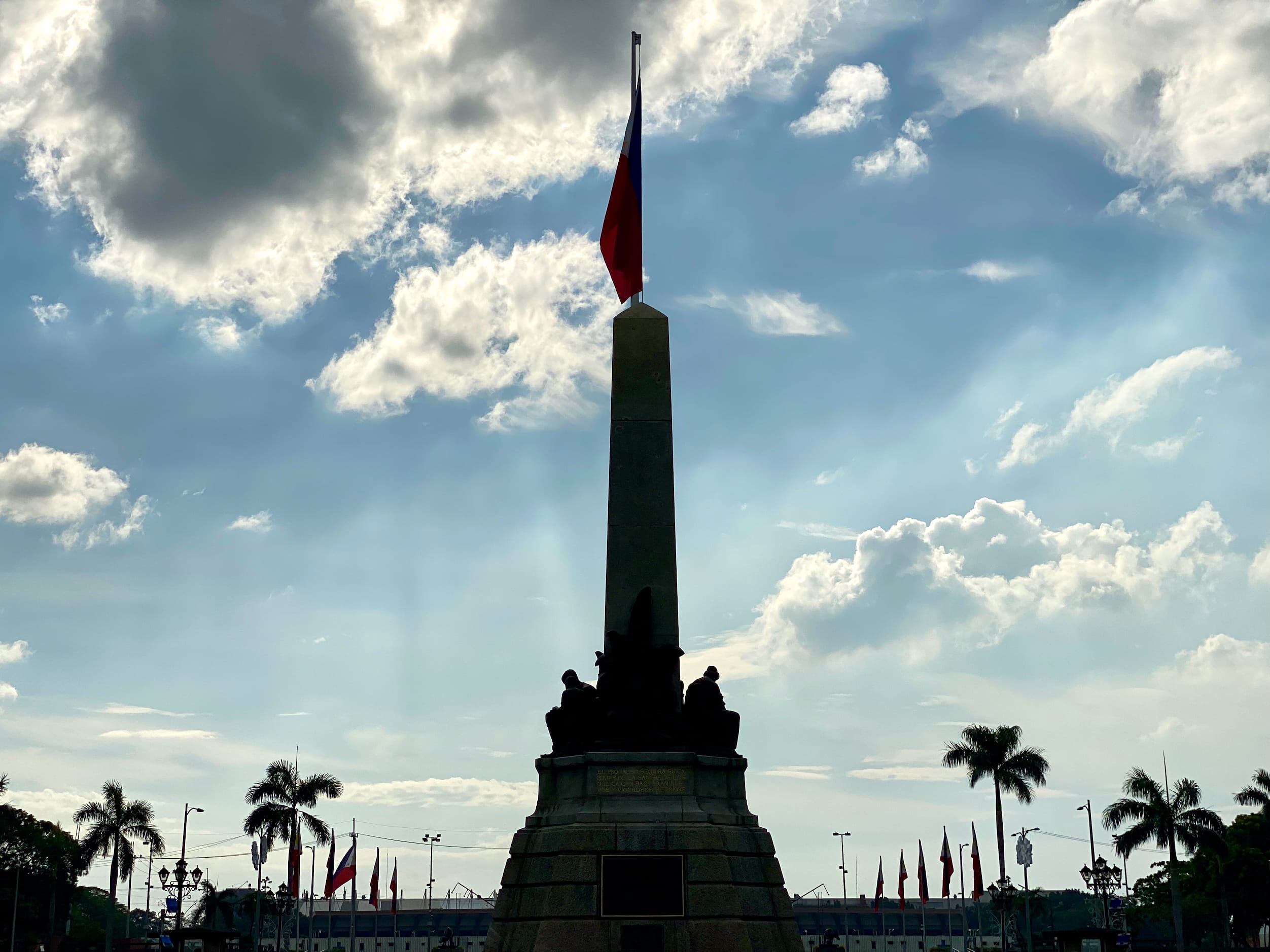
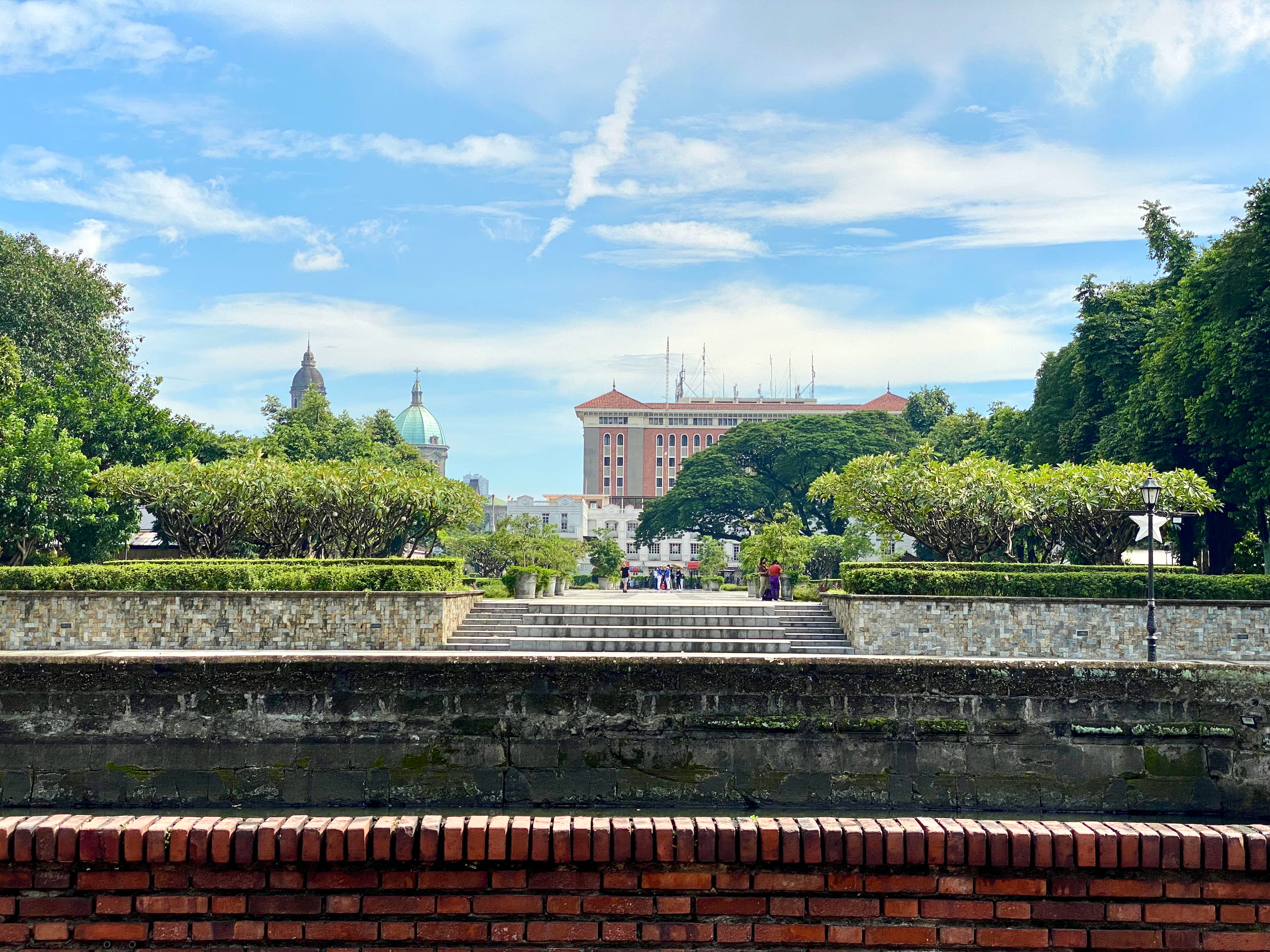
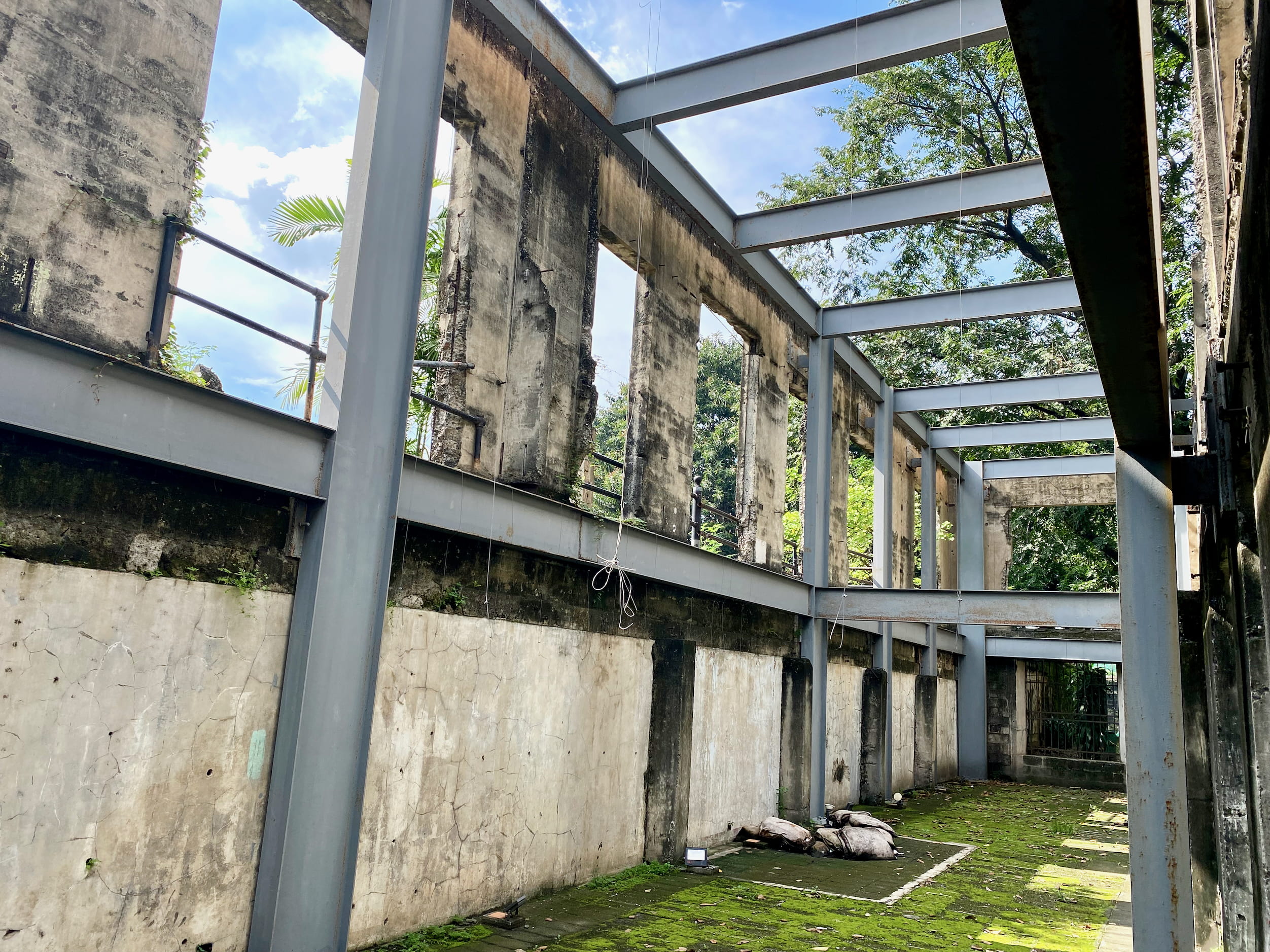
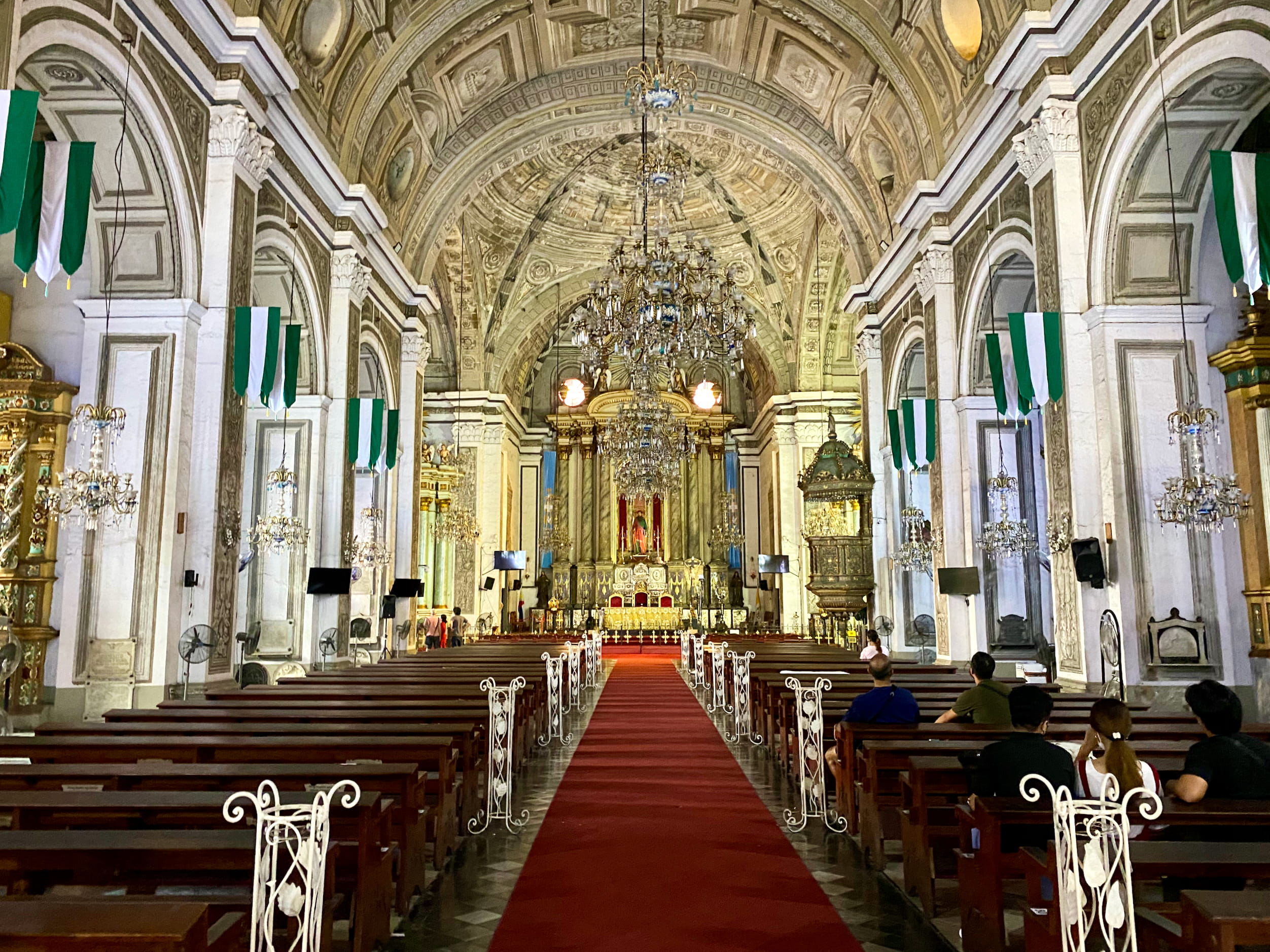
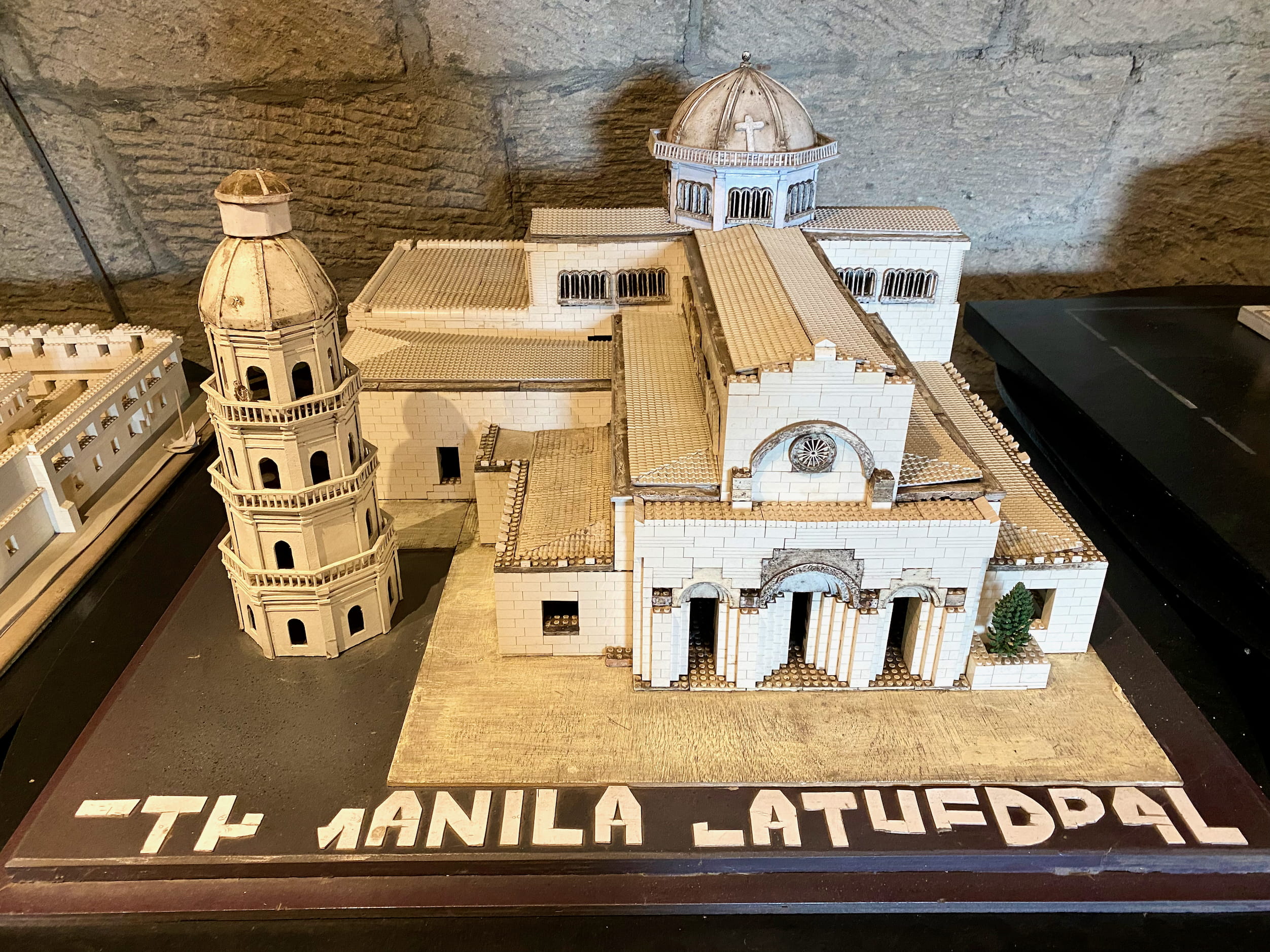
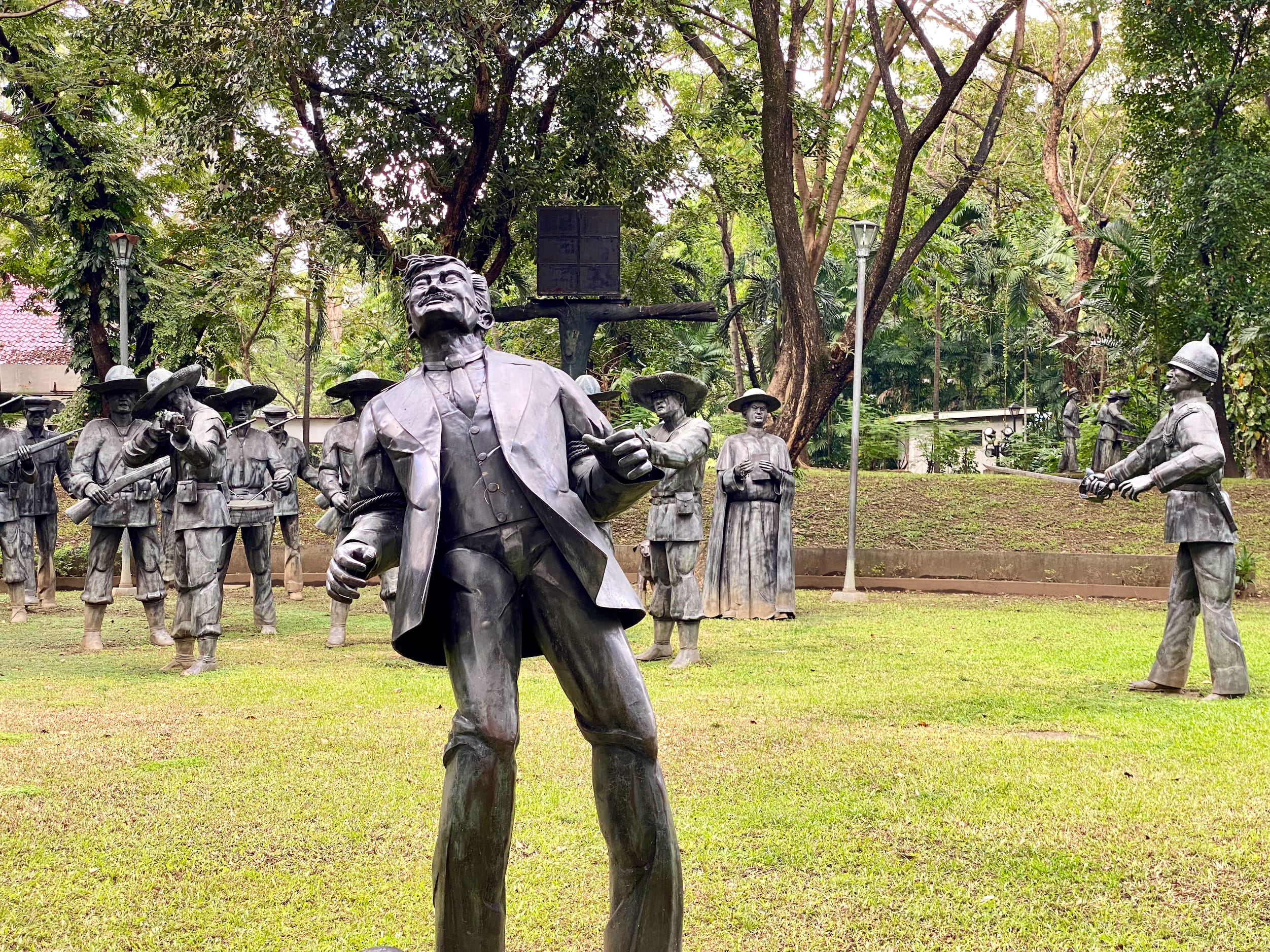
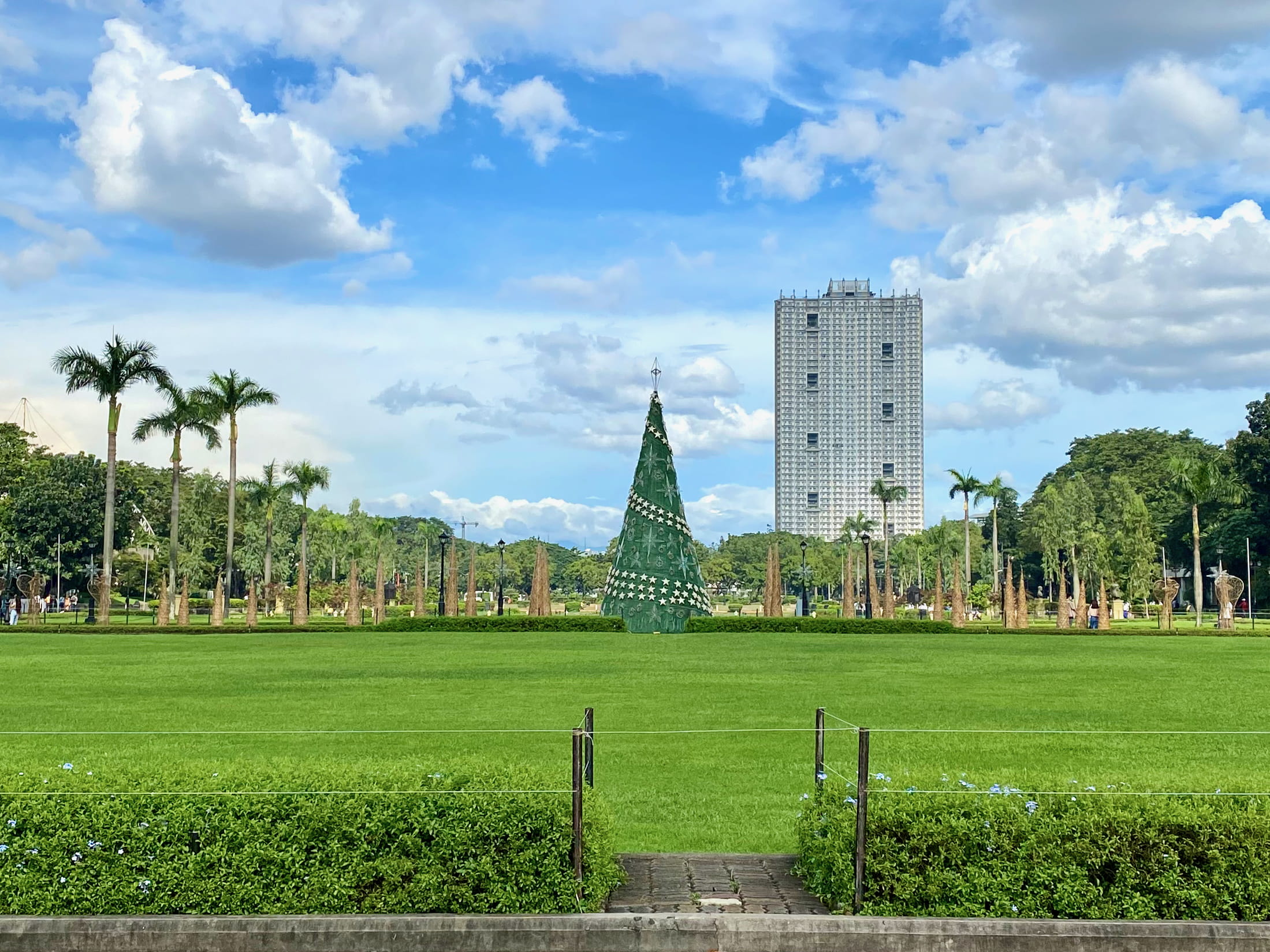
The OMTA highlight was the art museum. It a bunch of lovely stuff, including a decent amount of Filipino historical art. It also had a massive section devoted to Magellan, the Portuguese / Spanish guy who spent approximately a million years on a boat before landing in the Philippines and getting killed trying to make everybody Catholic.17
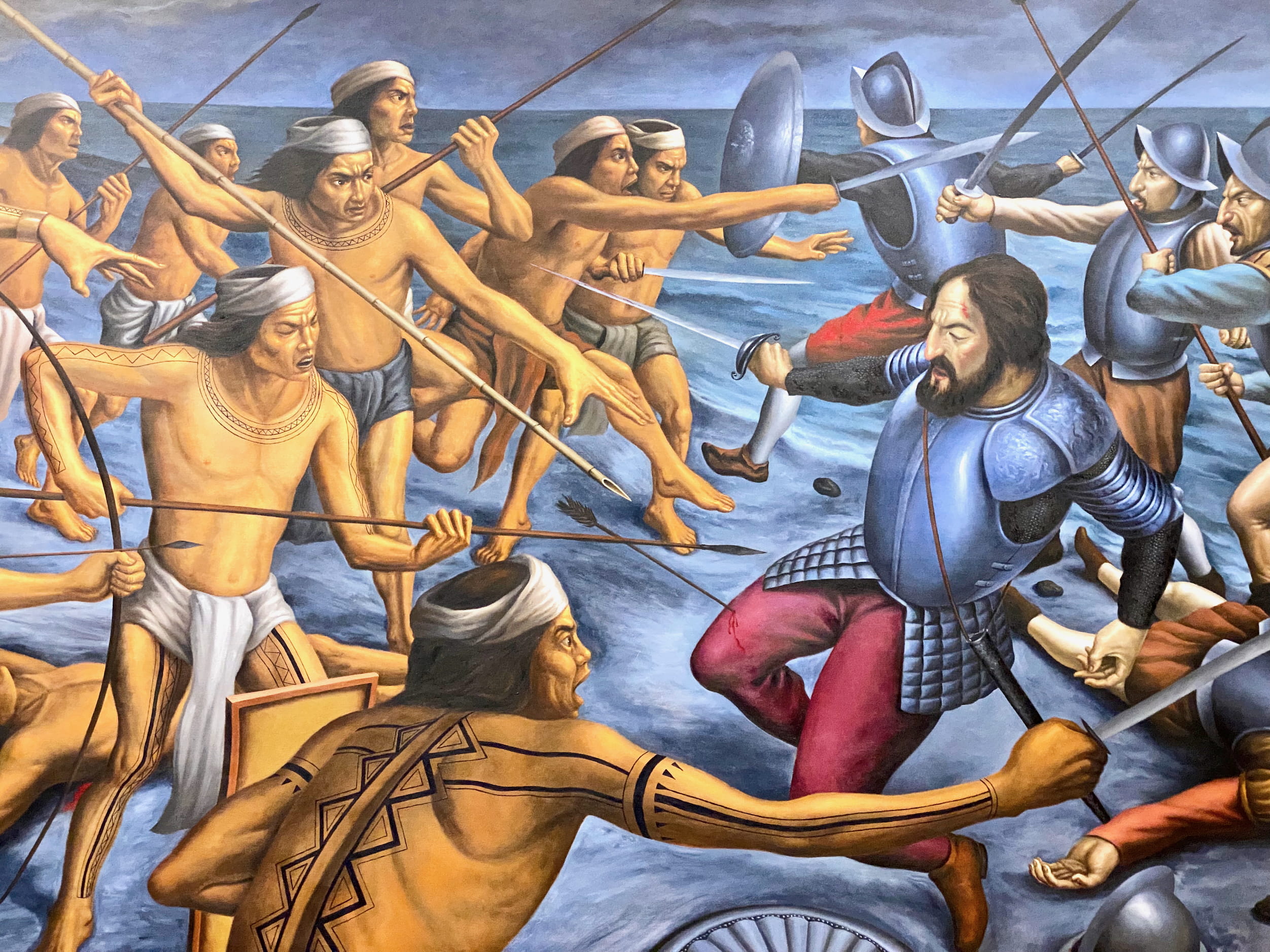
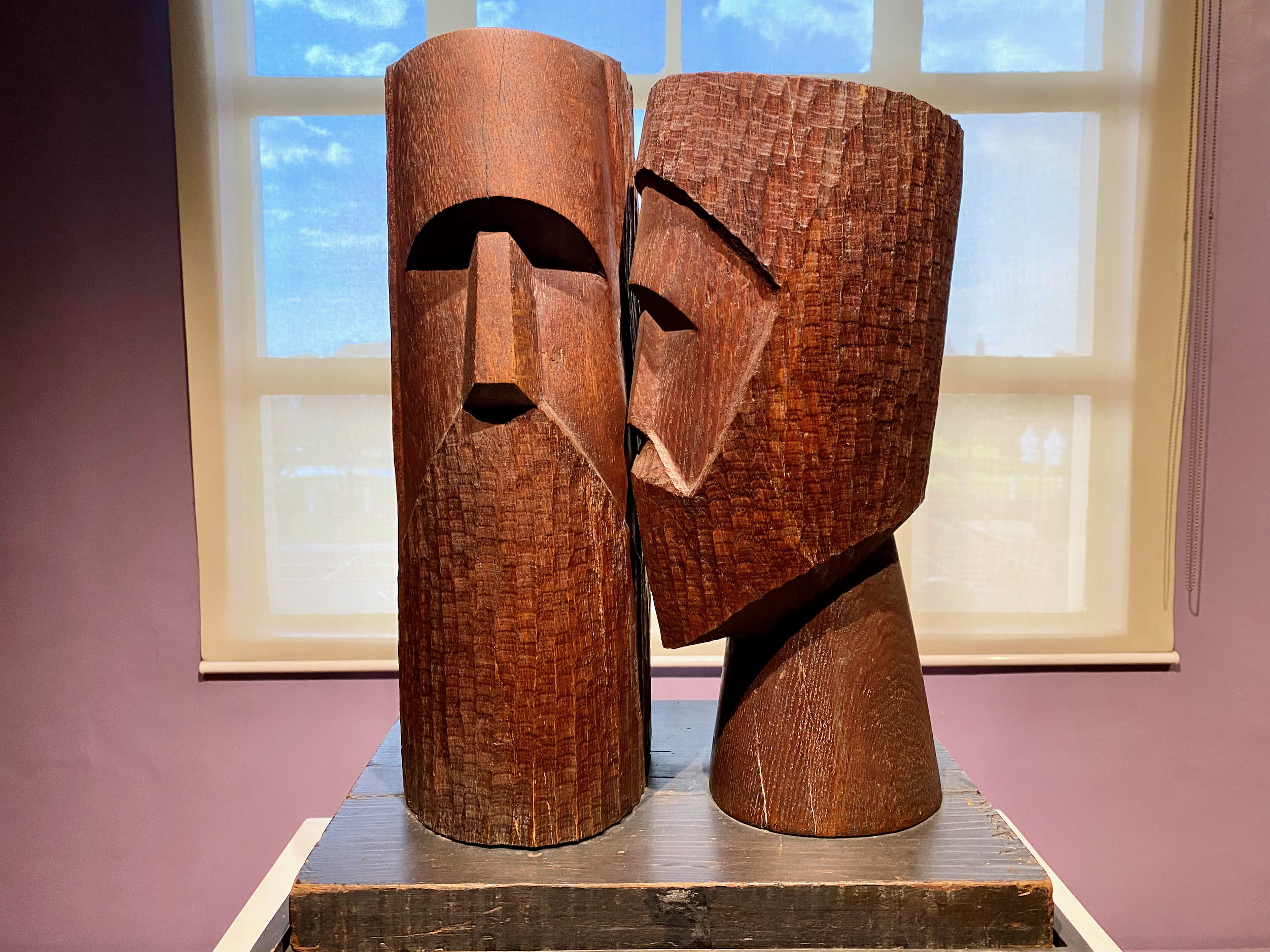
Oddly relatable.
Safety, Part II: The YouTube Experience
After some of the above experiences the first day or two, I spent a bunch of time on YouTube18 trying to answer the “is Manilla safe” question. This led into a strange rabbit hole I will now describe in five realizations.
-
Travel YouTube videos about any place are invariably positive. If you find a remotely negative take about a place—or even something like, “this aspect of this place isn’t for me”—the comments will be full of people from that place quartering and hanging the video maker. YouTubers have undoubtedly figured this out, so it’s hard to get any honest opinions.19
-
I walked through X’s most dangerous area is a whole clickbait category. E.g., I walked through Manila’s most dangerous neighborhoods. And, of course, as per rule #1, nothing happens to them, and their takeaway is: this area is completely safe. In Manila’s case, this is despite some funny subtle clues from the video that maybe what they’re doing is foolish, which I will leave in a footnote so as not to go too far into a tangent.20
-
It is hard to remember that all experiences are anecdotal. It’s easy to get swayed by a personal account, especially if you saw a video of it, and especially if it happened to you. The video maker, and you, and commenters are susceptible to this. Speaking of commenters…
-
Everyone thinks all places, especially their hometown, are equally safe. All safety-related videos involve people in the comments making the same claim: every city has its bad parts; you wouldn’t walk around (insert prominent USA city) at night; just keep your wits about you and don’t do dumb things.21 Now, in a way, there is some truth to this. Most people live normal lives all around the world. With that said, it’s also totally wrong. There are areas of Seattle I would not walk around at night, but I would walk around alone anywhere in Tokyo any time without thinking twice about it. This is because the USA and Japan have vastly different safety levels. A place’s safety is measurable by several factors, and it’s not rocket science. Like, how often do violent crimes or bribery or theft happen. So why do people think all places are equally safe? Well…
-
Everyone is calibrated to their hometown’s risks. For example, while I’m very unhappy about fact that the USA constantly has mass shootings,22 it’s not something that makes me feel unsafe on a day-to-day basis. At the same time, I have to acknowledge that, statistically speaking, it makes the USA less of a safe place to be. On the flip side, we don’t really have a pick-pocketing problem. Now, take somewhere like Spain, where you have much less risk of being shot, but way more risk of being pick-pocketed. I was there for just a couple weeks, and someone tried to pickpocket me, something that never once happened in many years in the USA, including living several months in NYC. Because of this, I feel much less safe in Spain than in the USA. I constantly felt like I had to watch myself, guard my phone and wallet. But to someone who is accustomed to Spain’s risks, I could easily imagine the reverse to be true. They might say, sure, someone nicks your coin purse once in a while, but you’re not going to die.23
So, is Manila unsafe? I don’t know. Nothing happened to us except feeling weird. And that Canadian we met climbing told us all those shotguns we’d been seeing around are actually empty. They’re just for show.
Finally, I Shall Recommend One Restaurant and One Terrific Bar
The Philippines had a reputation for having great English and great service culture, which we found to be true. If people spoke English, they generally spoke great English. It was so strange but pleasant to have someone acknowledge you, say “Welcome,” and even smile when you walked into a café.
An order of law seemed to be that food comes with a hokey puck of rice.
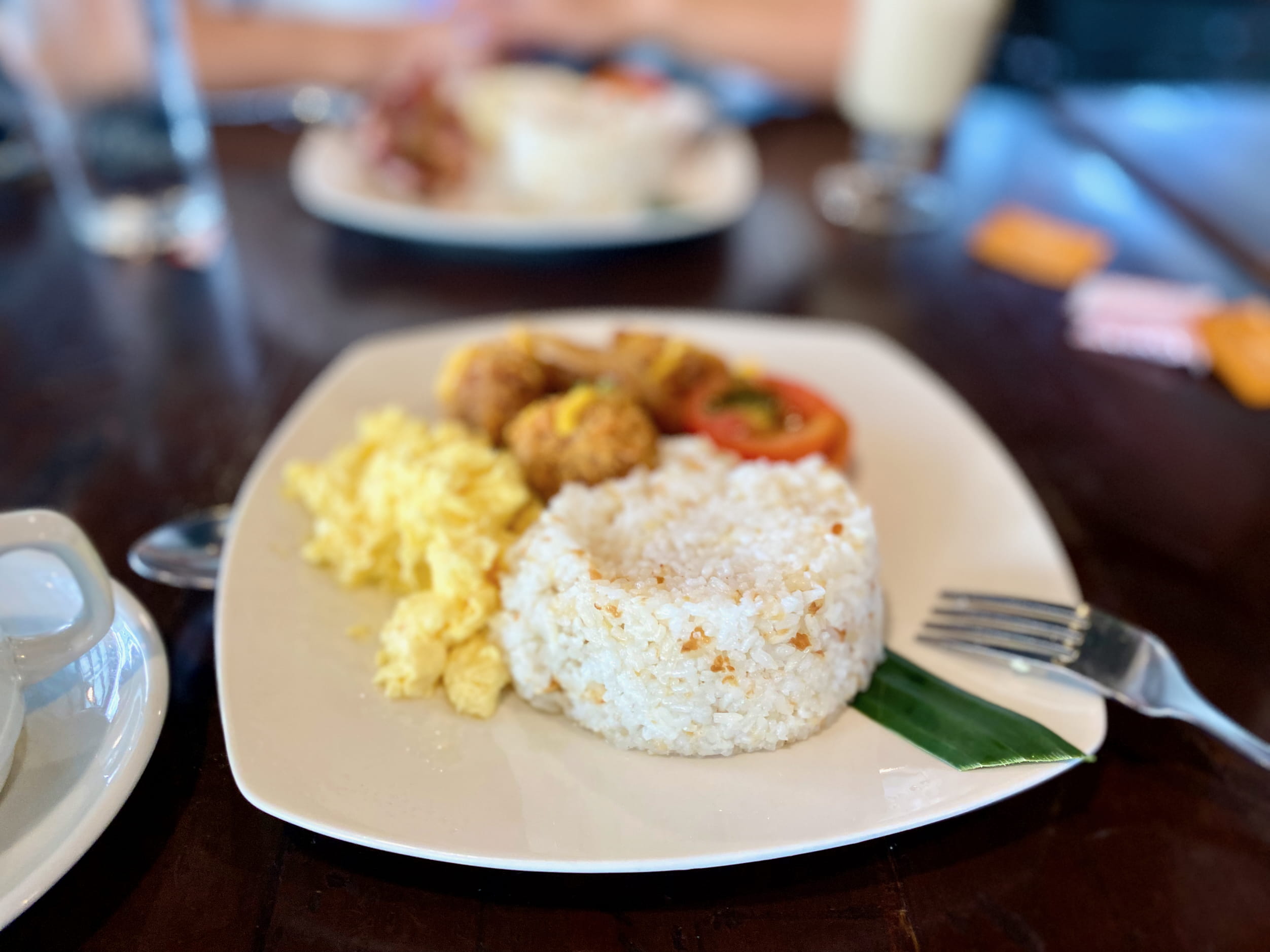
Most grub looked roughly like this.
I’m also pleased to report that, of all the national light beers I’ve tried (every country’s got their own), San Miguel Super Dry has been my all-time favorite.
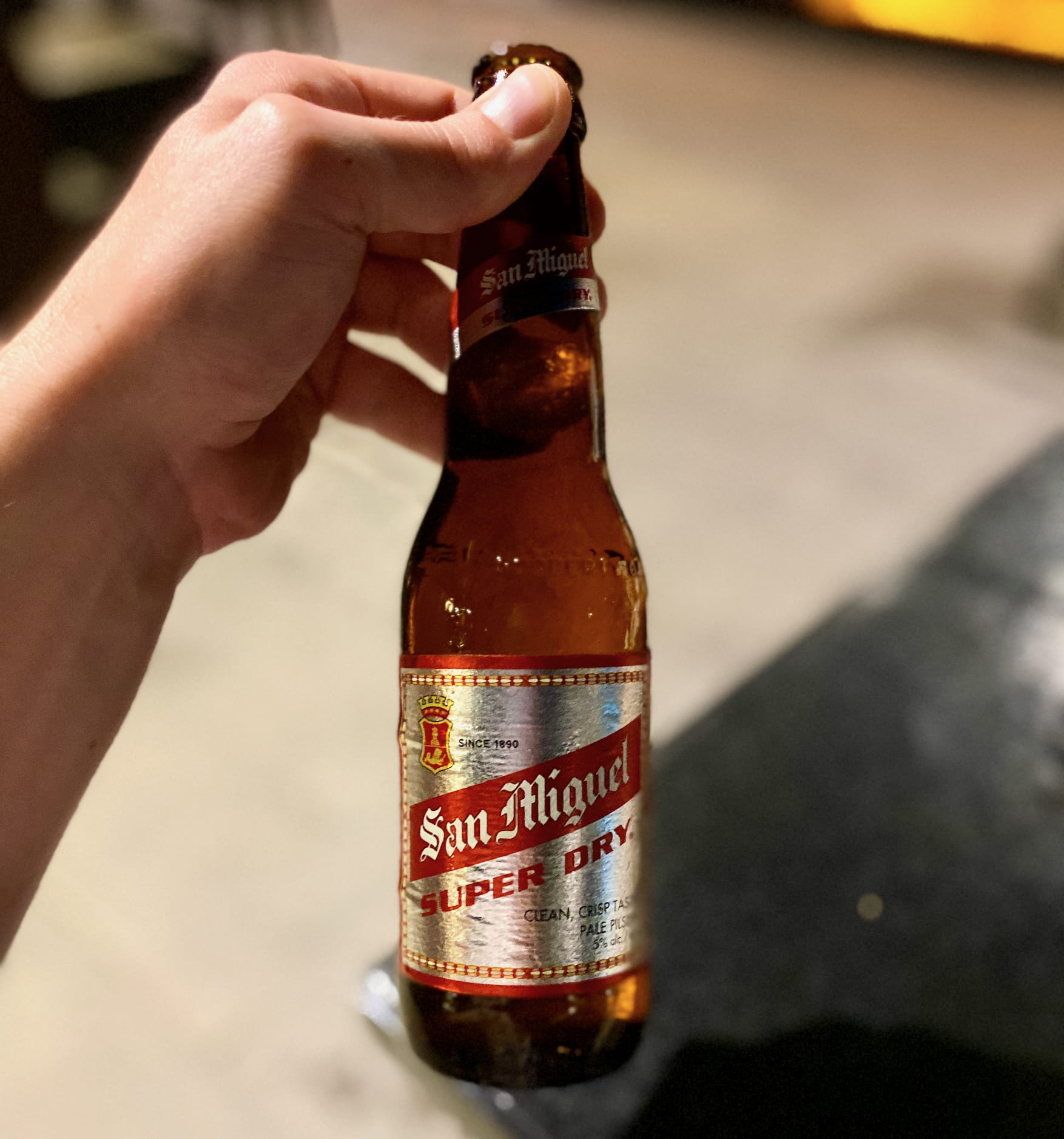
We had a meal at Lampara, which was awesome. This is recommendation number one.
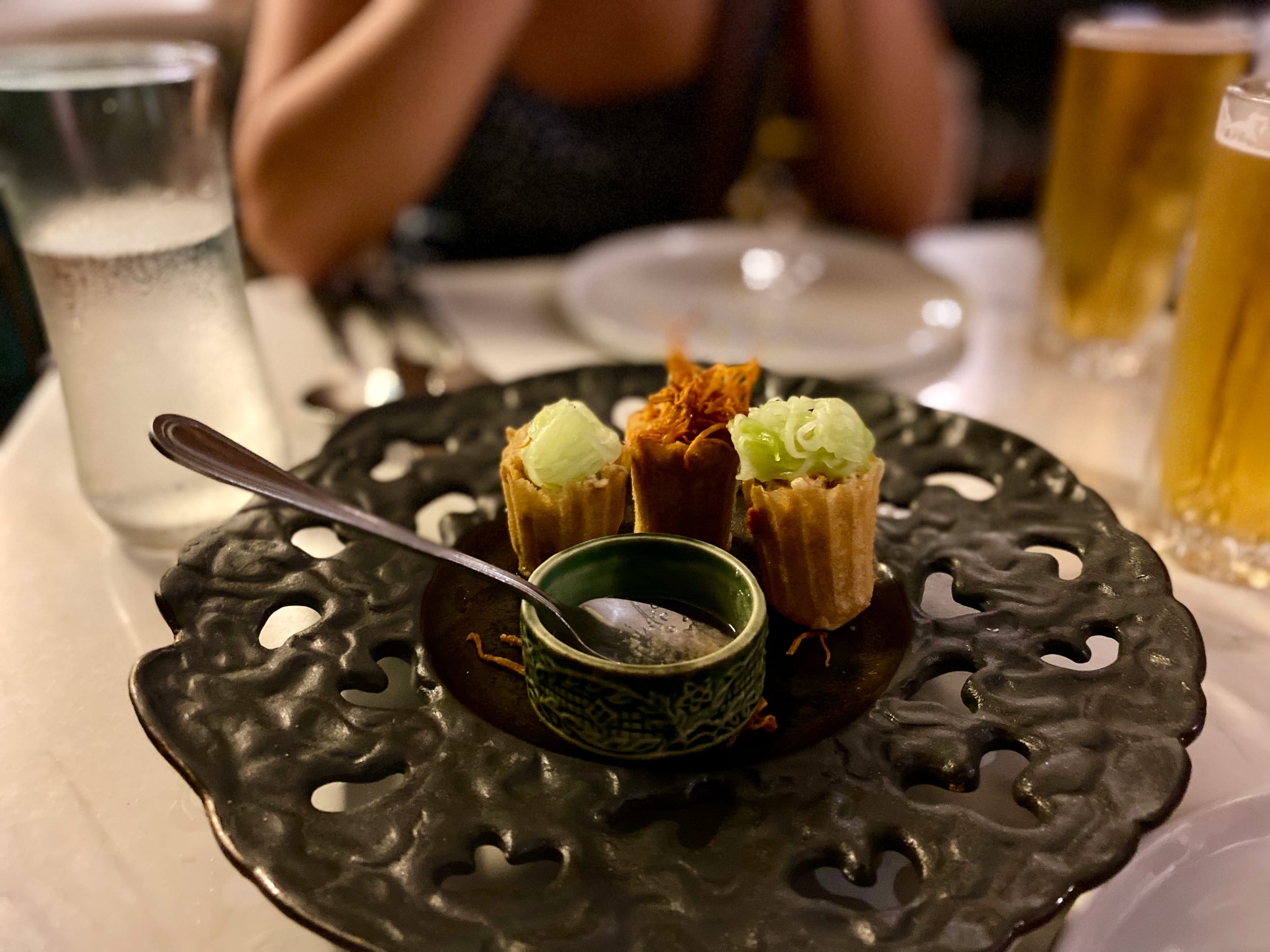

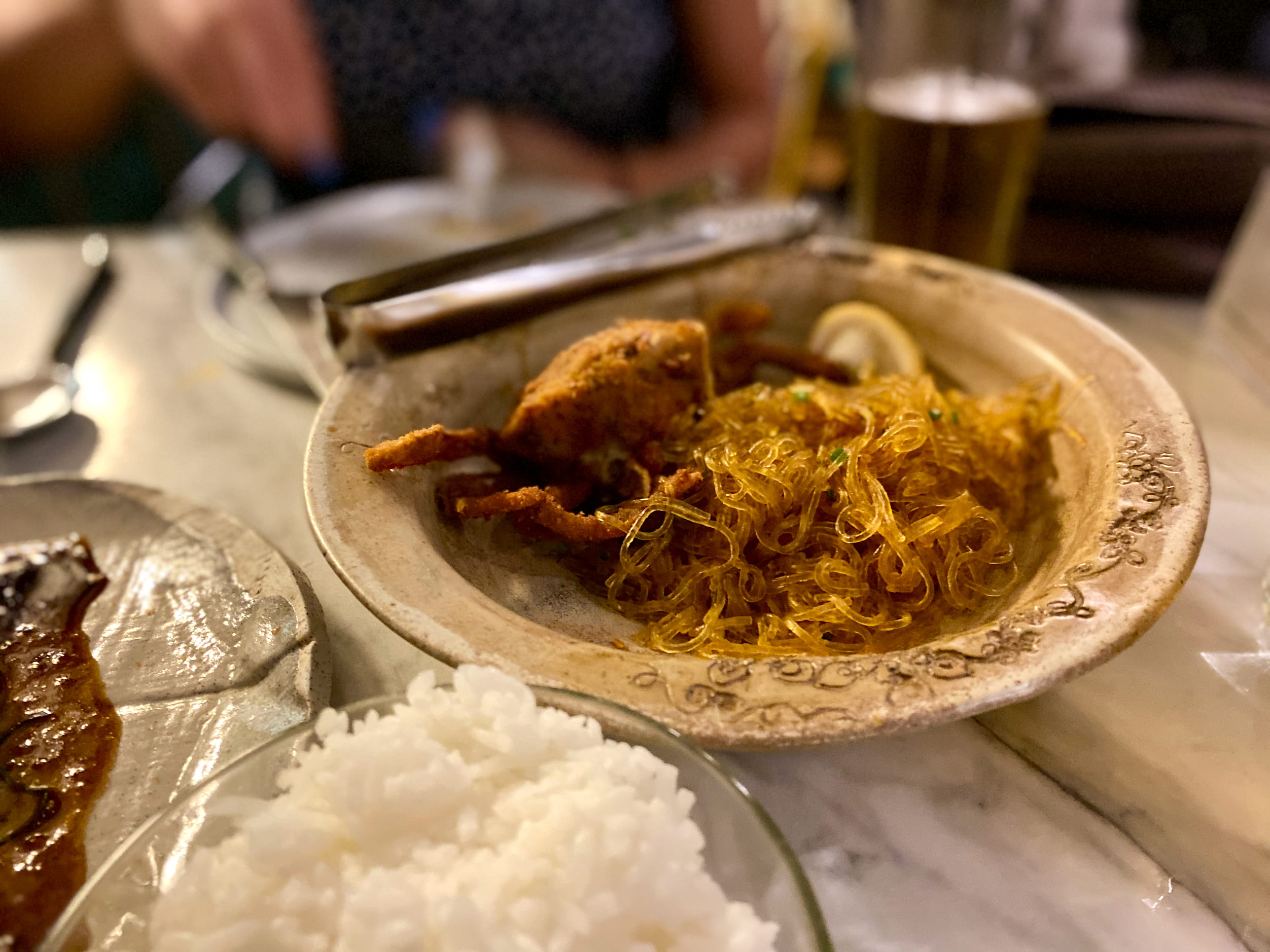
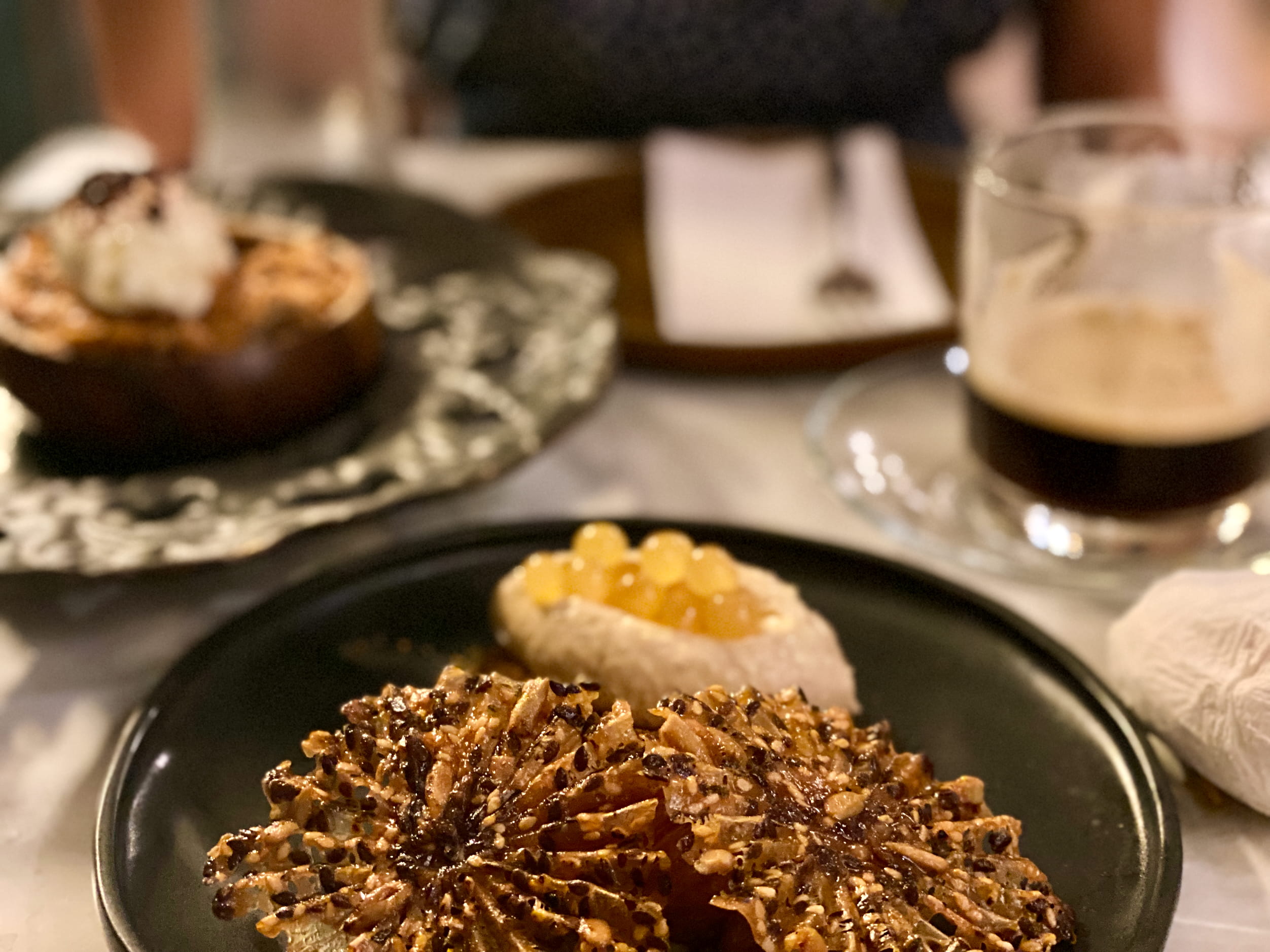
But even more so, I have to urge you to stop for a drink at Run Rabbit Run, should you find yourself in Makati. We usually try one or two top-rated craft cocktail bars in each city, and this was the best one of the entire year. Creative and fun, but most importantly, complex and impeccably balanced.
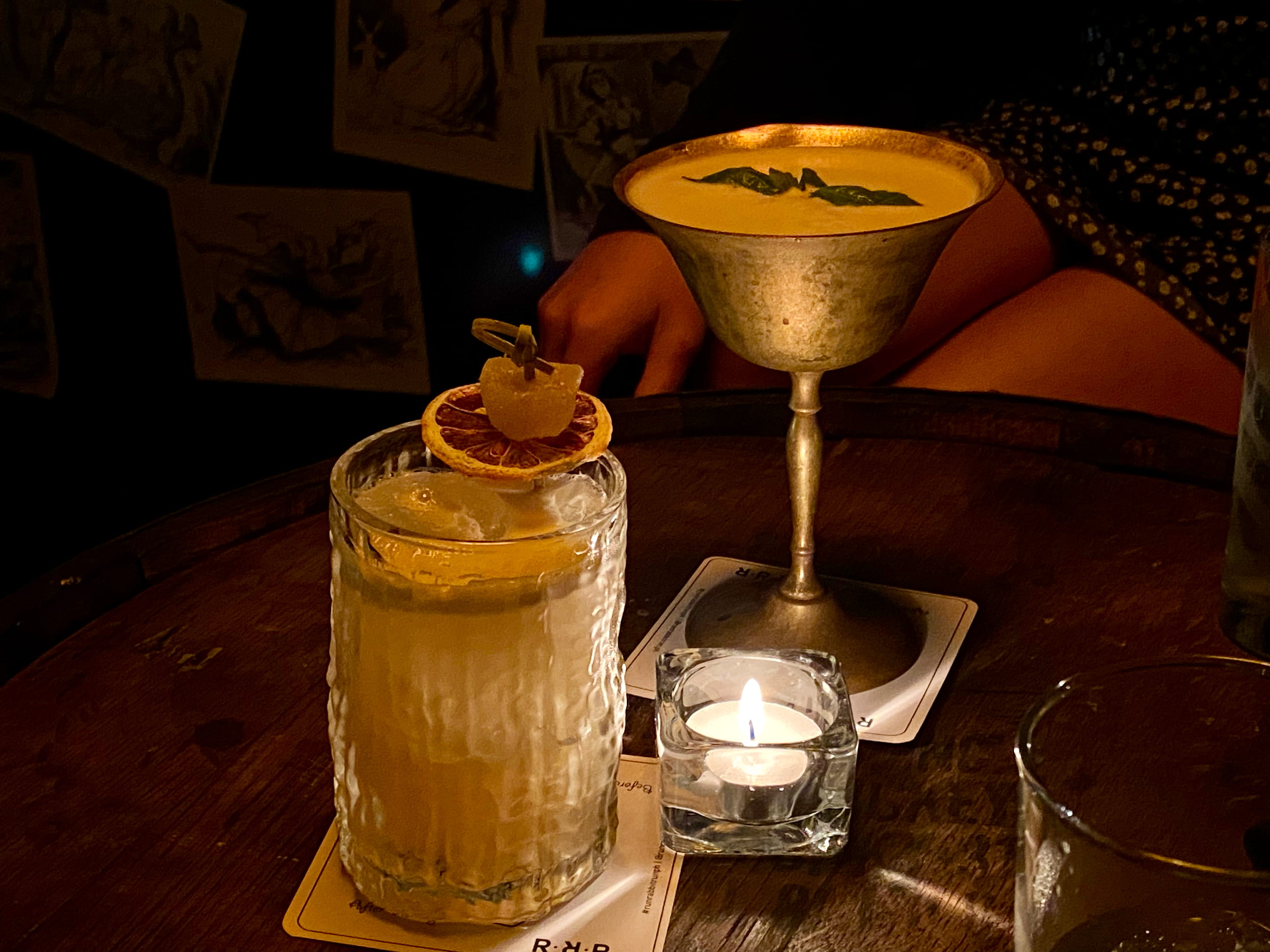
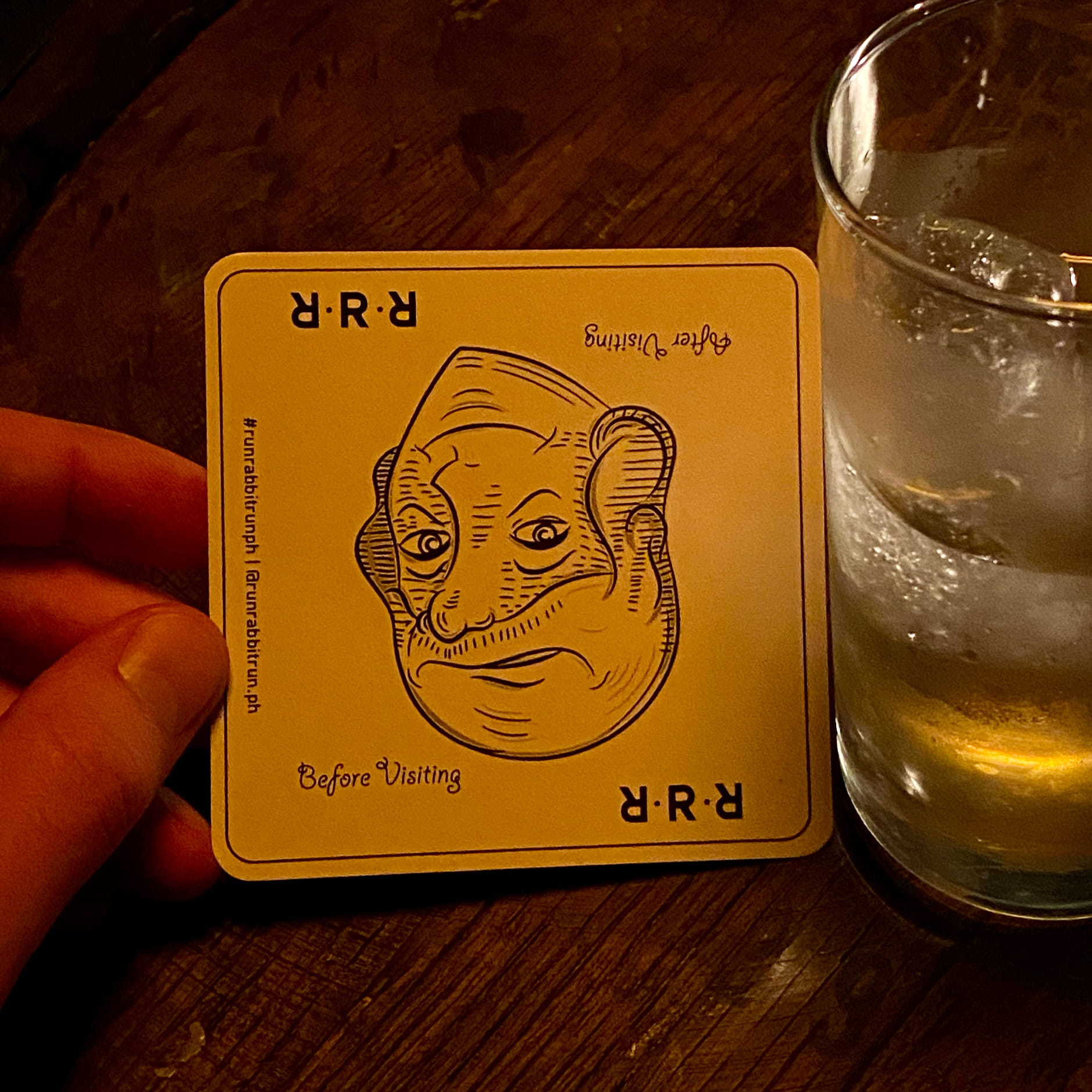
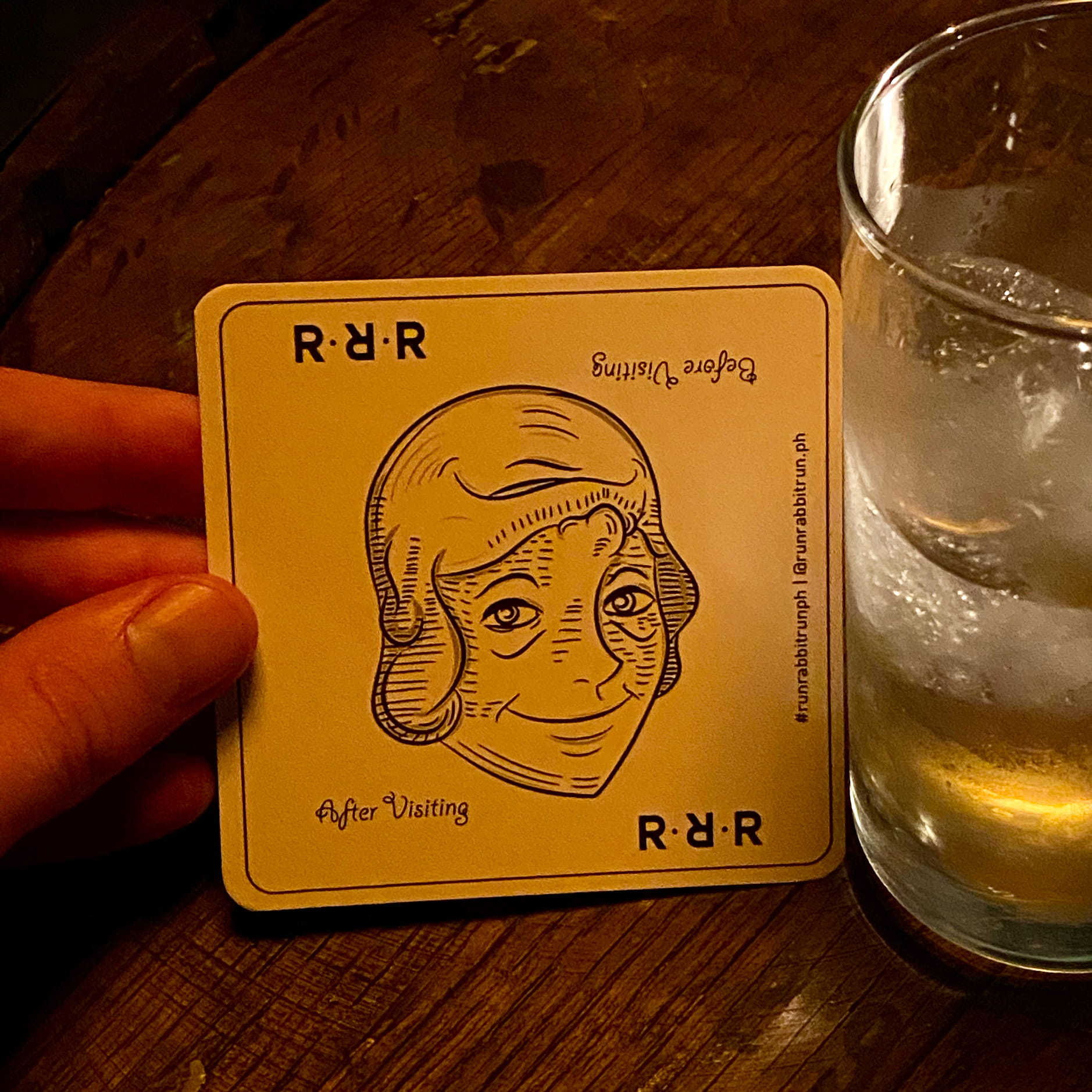
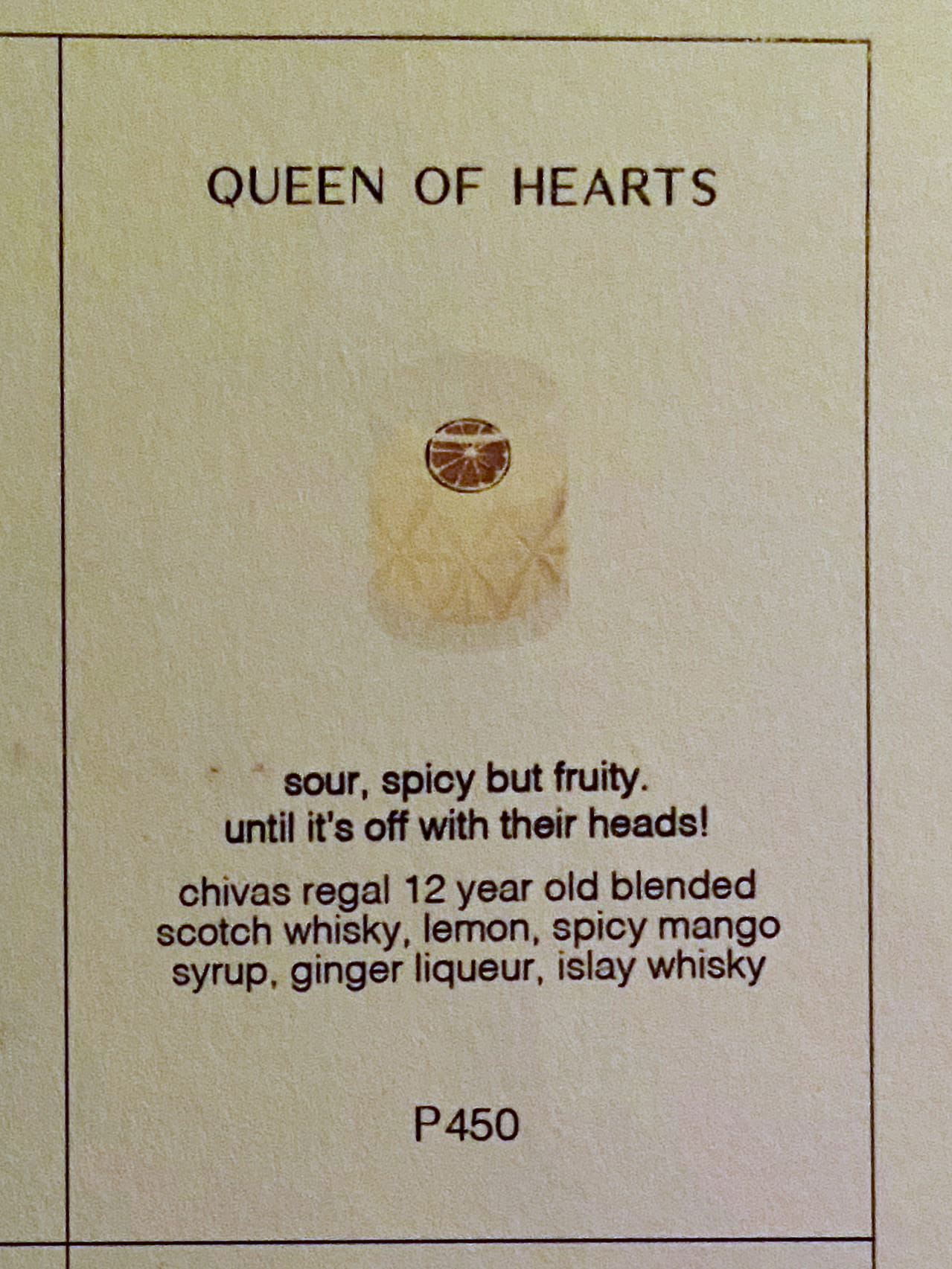

BTW, we’d heard the Internet speeds in the Philippines are miserable, but we found them to be totally fine. Good enough for video streaming and video calls. A pleasant surprise.
Next stop: a few more of the Philippines’ seven thousand six hundred forty-one islands.
Footnotes
If you read nothing else I write about Manila, this kind of sums the whole thing up. ↩︎
The transport woman seemed unhappy we weren’t buying a ride from her and withheld ATM advice. ↩︎
They weren’t in lines or anything, just all sitting outside. What were they waiting for? ↩︎
It could be we missed one upon arrival, but we looked pretty thoroughly and didn’t spot any. Only those currency exchange scam desks. And you definitely need cash; Grab refused to use our credit cards, as it is wont to do, and of course the taxis don’t take card. ↩︎
We always take public transit if it’s available, but there’s no metro or remotely feasible bus route into the city. I’ll link to the busses later. ↩︎
Our experience in Vietnam is that Grab translates these. ↩︎
Apparently it is/was not uncommon for people to stop taxis on the stretch of road after leaving the airport to mug the passengers. ↩︎
Turns out the laminated paper / clipboard people dealt exclusively in nine-seater vans. ↩︎
Disconcertingly, this appears to be for safety, though I stop my imagination before I can figure out exactly what it is preventing. ↩︎
If you want a wild read about conflict and corruption, check out the current president, son of the former dictator. ↩︎
Forty minutes in practice. ↩︎
Would have loved to ride a jeepney, but the logistical hurdle outweighed the temptation. ↩︎
Oddly, I didn’t feel this way when in the other most heavily armed place we visited, Israel. I think it’s because cities in Israel are known to be quite safe, and the people with guns are the military, not the guy in front of a 7-11. Also probably because I spent a year in Switzerland, where military service is also mandatory, and so you regularly see scraggly youth carrying their automatic rifles on trains. Though in Switzerland they don’t have ammo in them. I’m pretty sure the Israeli ones did. ↩︎
In my notes I wrote “eminently miserable” but let’s assume I was being a bit dramatic. ↩︎
He actually said Manilla sucks, loudly and several times. With lots of people around. I had no idea how weird this was for him to say around a bunch of locals so I kind of put on my best bemused but engaged but unconvinced but convinced for the sake of the conversation face. ↩︎
Nothing says lol Spain was here like ubiquitous Catholicism. ↩︎
The high budget Magellan exhibit, complete with all kinds of infographics and animations, was a bit bizarre. It seemed like they were celebrating, even glorifying him. But the Philippines seems largely anti-colonialism, which Magellan was explicitly doing. 🤷♂️ ↩︎
YouTube organically segregates into three subject genres: (1) vlogger/influencers who just went to a bunch of malls in Manila and think it’s great; (2) vlogger/influencers who walked through a bunch of statistically dangerous areas in Manila and tell you it’s completely safe; (3) non-influencer vloggers whose videos have like 200 views and provide the most honest accounts, e.g., “we hired a driver for the day, he took us to all the tourist spots, and at each stop he told us what areas were actually safe to walk around in.” ↩︎
YouTubers also fall prey to the travel blogger phenomenon I described in the Dalat post: they’re incentivized to sell you a fantasy. ↩︎
What happened in these videos is this white guy would walk around various parts of Manila and selfie stick videotape himself. During, he waxes about how wonderful the people are, how completely safe it is, and how he even walks around with expensive electronics and jewelry and a full wallet because it’s totally fine. But the funny thing is, while you mostly see him meet and play with various kids, he also sometimes chats up adults. And when saying goodbye, the adults always say to him, be safe. Not seeing to realize that this is potentially advice for him in particular, and not just a fun thing people say to each other, he—the video guy—starts telling everyone be safe as his standard goodbye. ↩︎
This is often accompanied by, “sure, I was robbed once, but that could happen anywhere.” ↩︎
And, more depressingly, doesn’t seem to be remotely capable of doing anything about it. ↩︎
One dismaying thing looking all this up is realizing that the USA is actually not a very safe place at all. Most rankings put it closer to (more) corrupt and actively-at-war countries than other first world nations. This is bizarre (and, again, depressing) when you remember it’s the richest country on the planet. ↩︎
